Turkey Travel Part X: Hagia Sophia, Topkapi Palace & Blue Mosque
Filed under: Hagia Sophia, Topkapi Palace, Blue Mosque, Turkey Travel
Day 8
Sunday, 20 Oct 2019
Journey to Istanbul
In the morning of 20 Oct 2019, writer and tourmates left Ankara, the capital of Turkey, and travelled 400 km south-west to Istanbul, the largest city of 15 million people in Turkey.
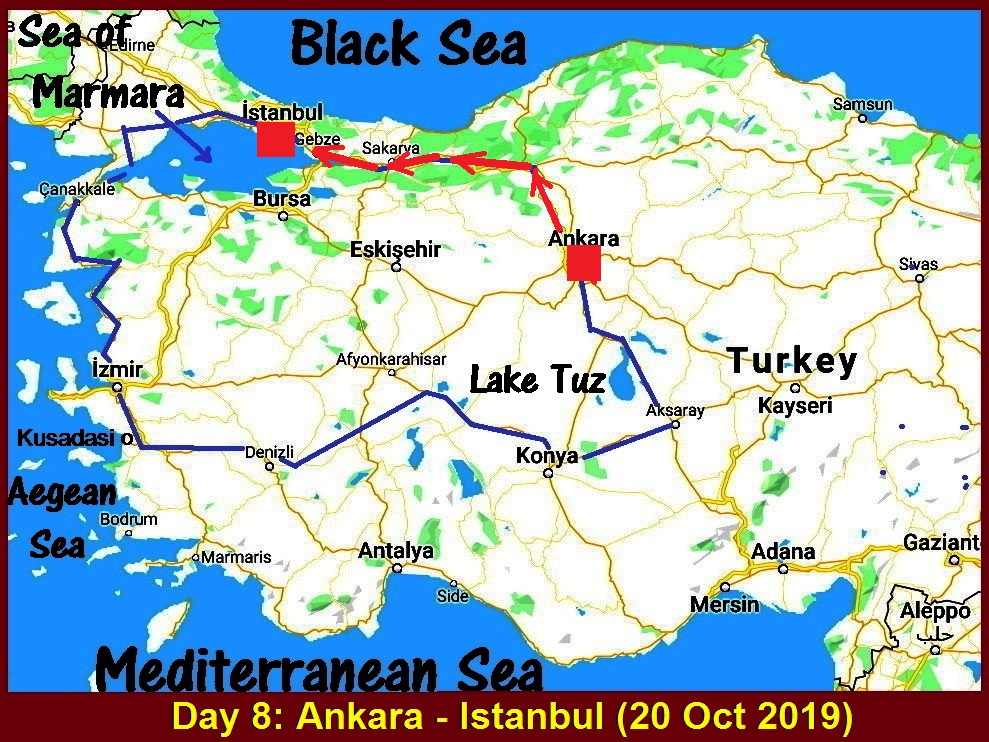
Arrival in Istanbul City
On arrival in Istanbul City, we crossed Bosphorus Bridge over Bosphorus Strait from Asian side to European side at 12 noon on 20 Oct 2019. The bridge was built in 1973, the first one to be built across Bosphorus Strait.

Writer and tourmates crossed the Bosphorus Bridge that links the Asian side to the European side in Istanbul City on 20 Oct 2019.
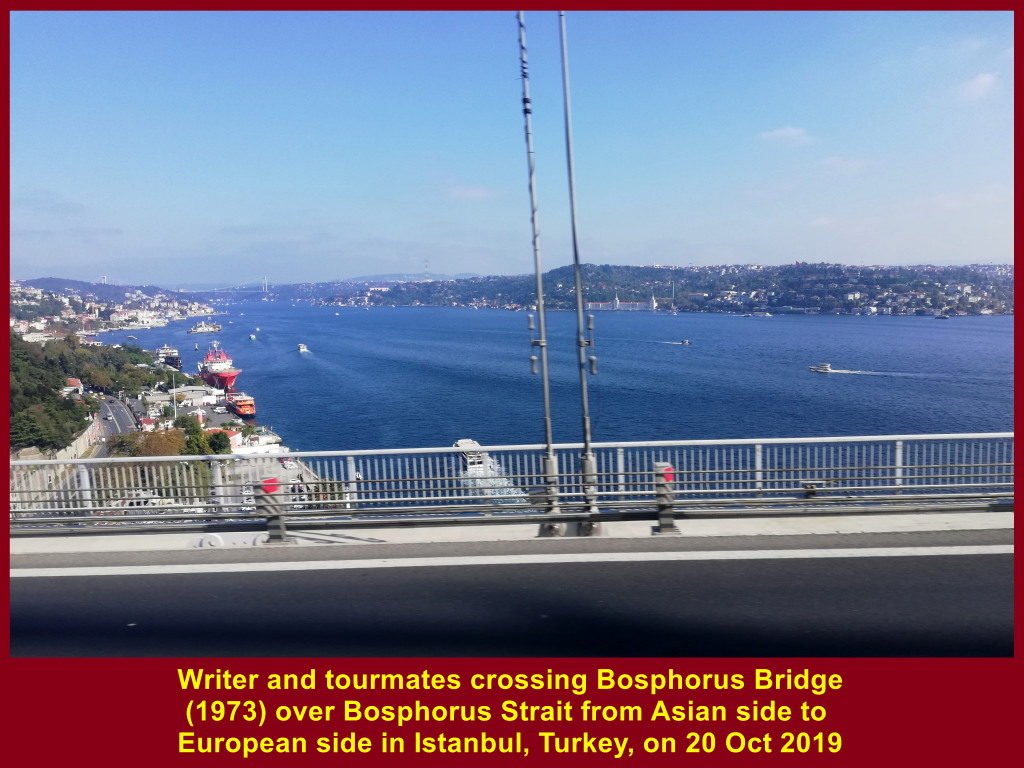
Lunch Time
After crossing the bridge, we went to a restaurant, Sultan Kosesi Restaurant, to have lunch.
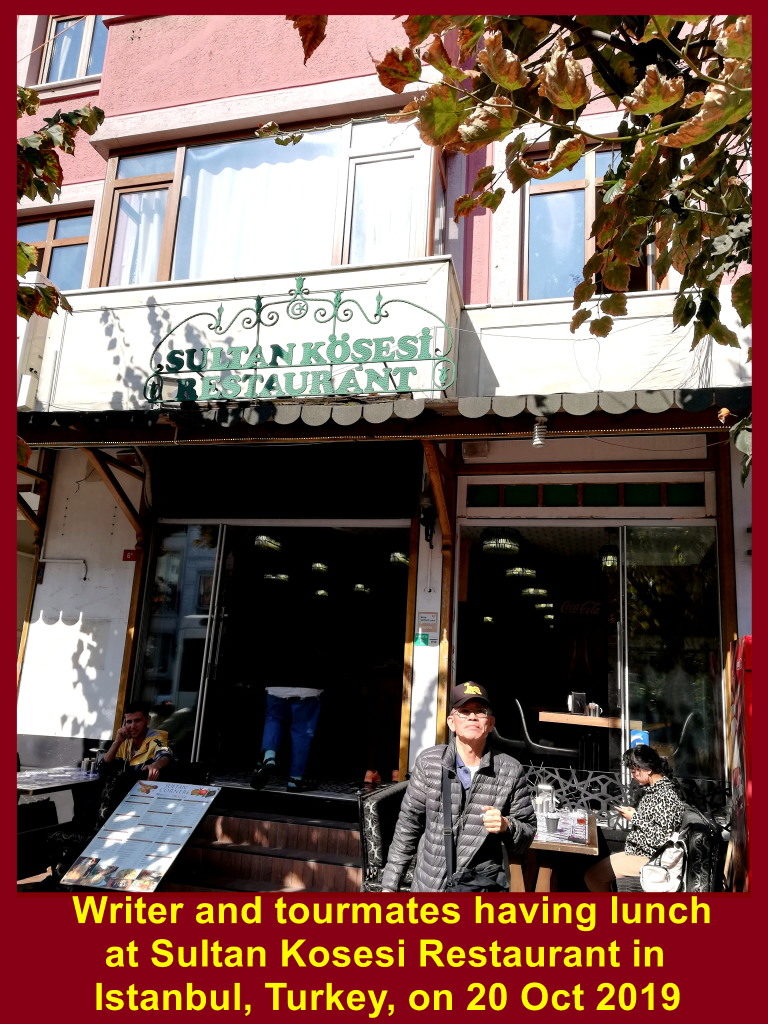
Visiting Hagia Sophia Museum
Immediately, after lunch we went to visit three places of interest, viz. Hagia Sophia or Ayasofya Museum, Topkapi Palace Museum and Blue Mosque in the city of Istanbul.
Pictorial map below shows the location of the three famous places in Istanbul City the writer and tourmates would visit after lunch on 20 Oct 2019.
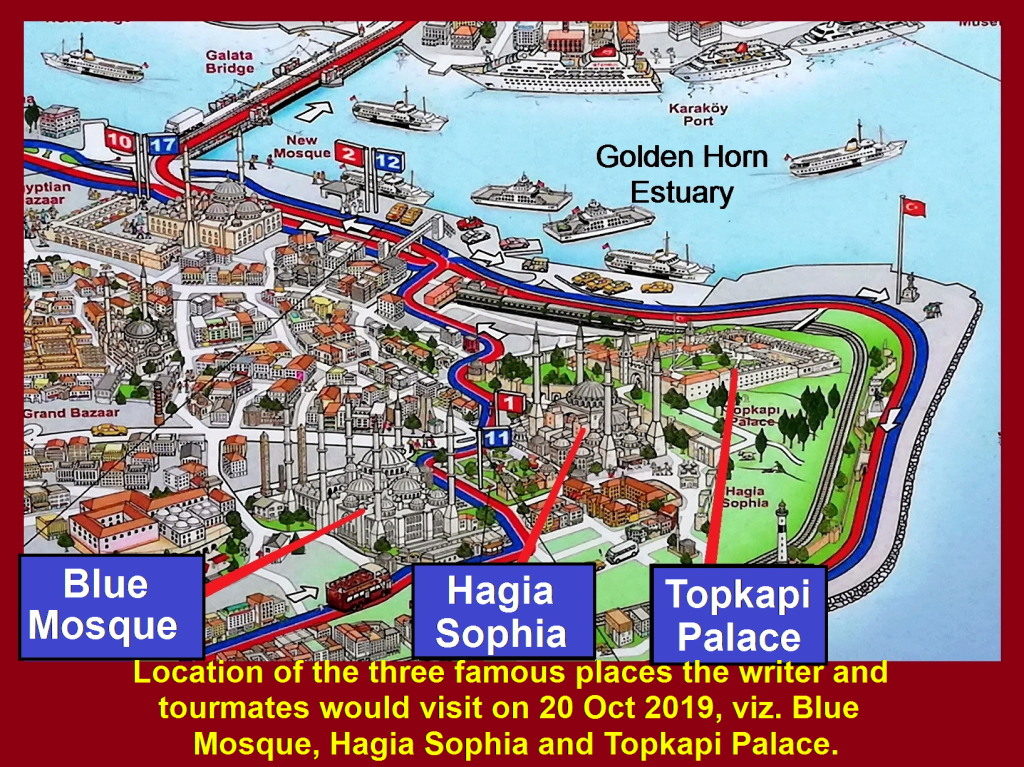
Group photo for remembrance at Hagia Sophia Museum in Istanbul City
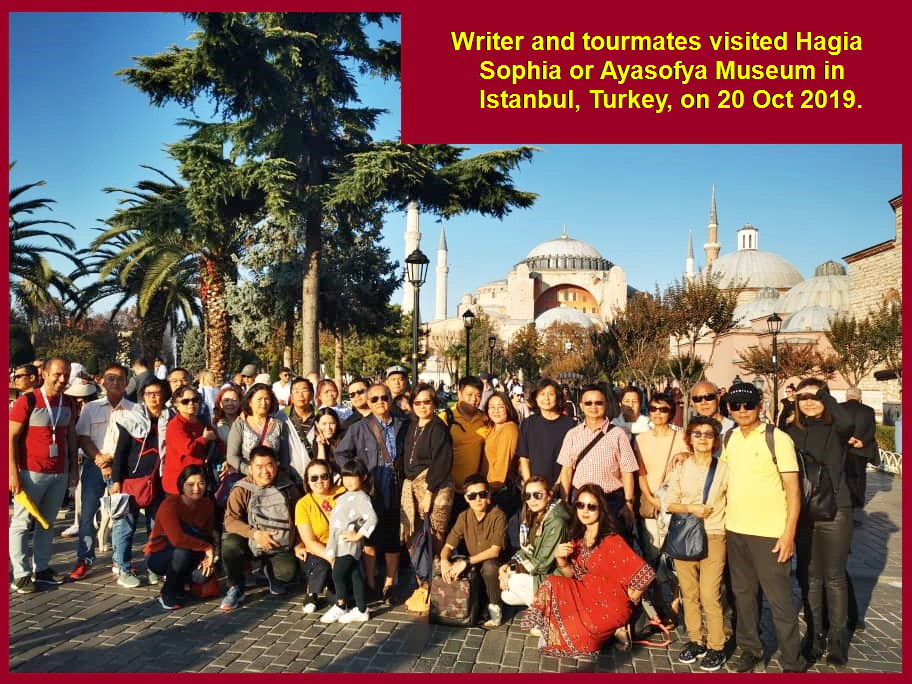
Hagia Sophia, a Byzantine Cathedral
Hagia Sophia was a Byzantine cathedral from 537 until 1453. Then it was an Ottoman mosque from 1453 until 1931. Finally, it is a museum since 1935.
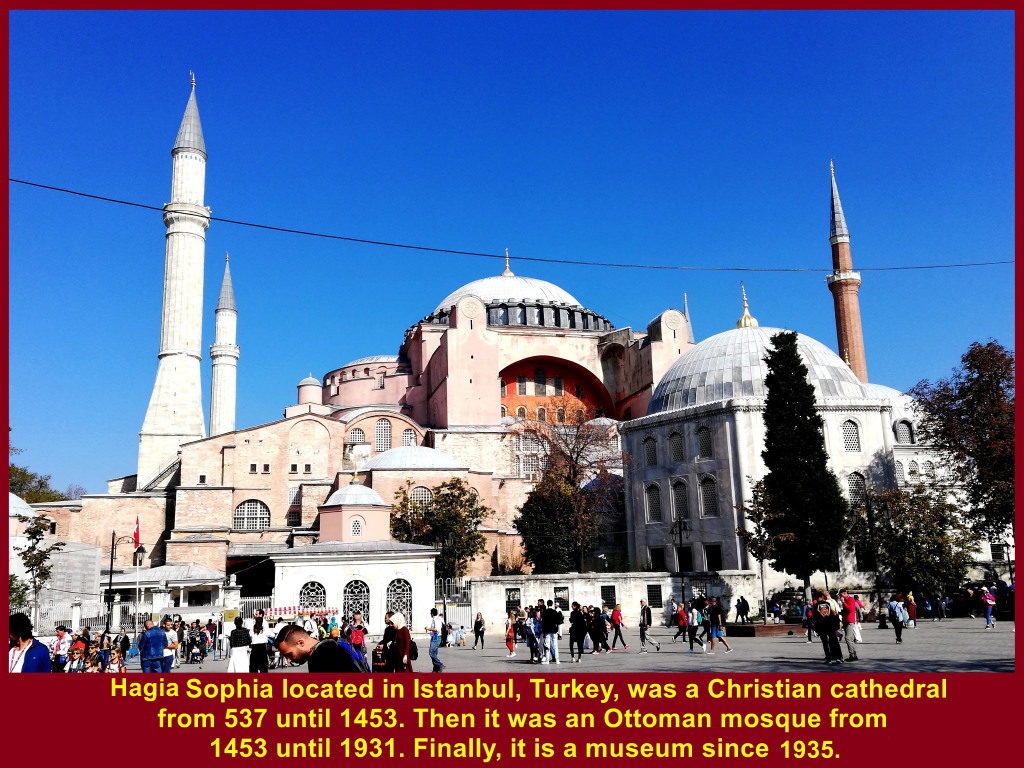
Side view of Hagia Sophia in Istanbul, Turkey
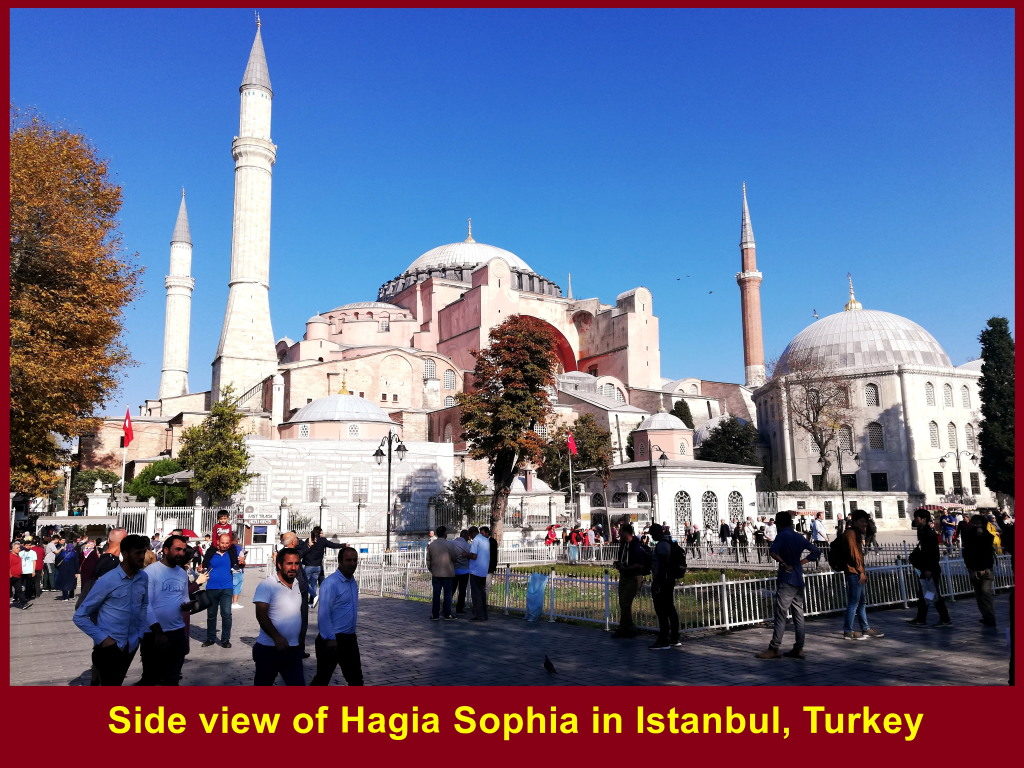
Entrance of Hagia Sophia or Ayasofya Museum in Istanbul, Turkey
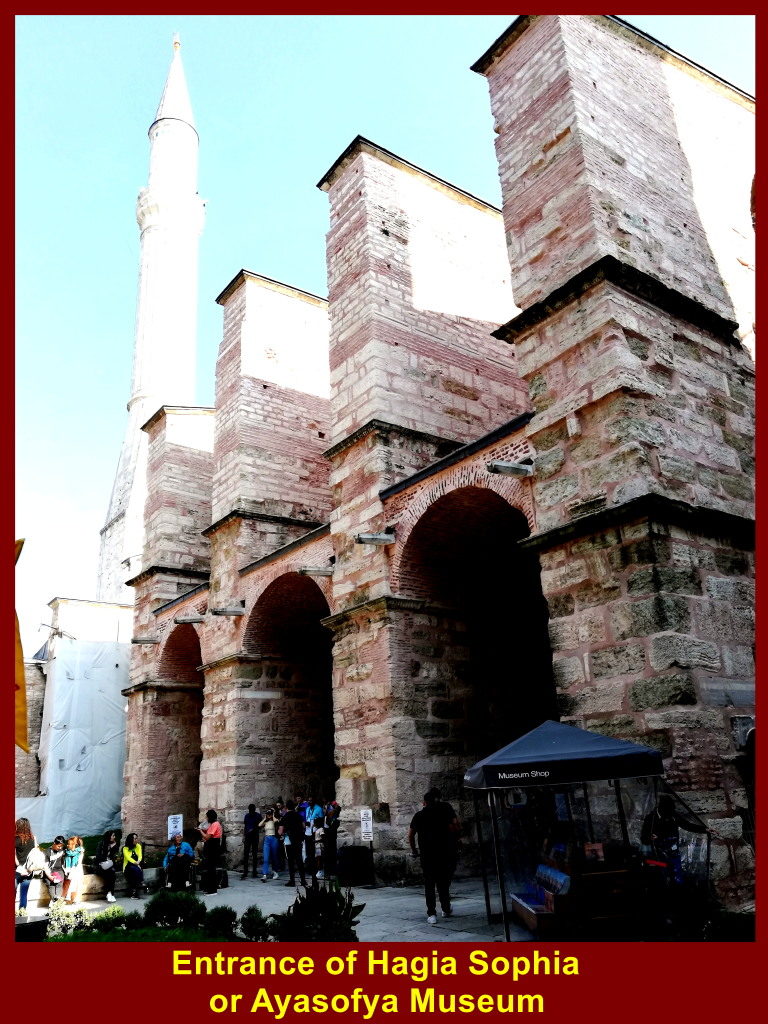
Writer and wife were in the Hagia Sophia Museum on 20 Oct 2019.
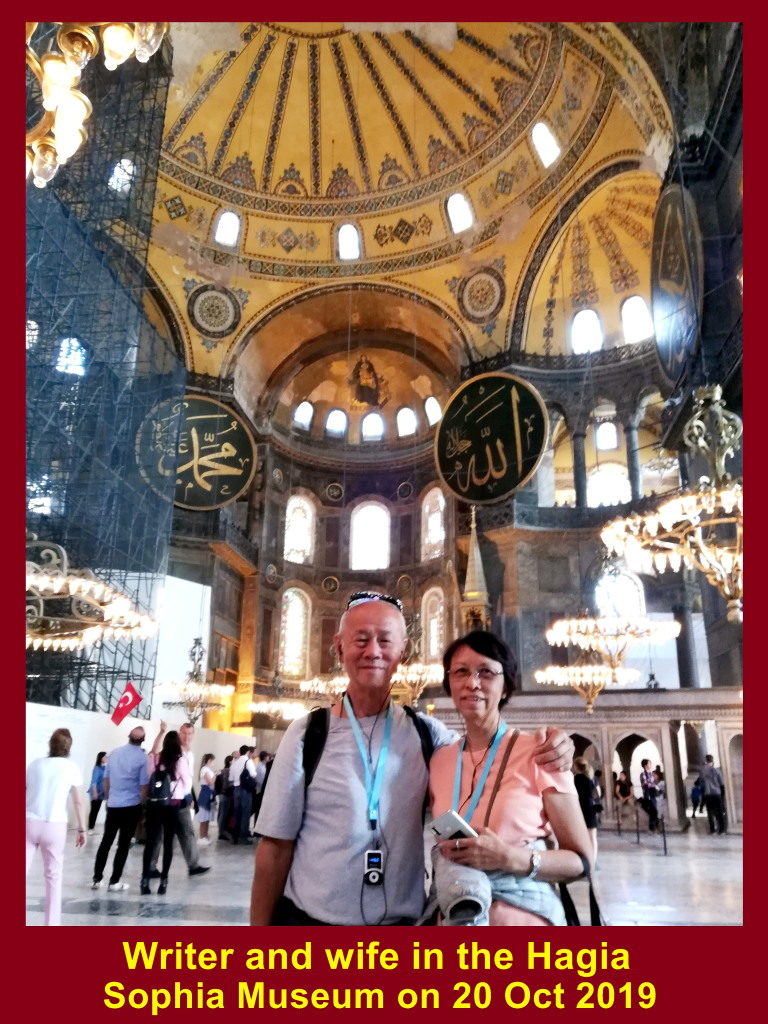
Quranic Writings
In Hagia Sophia Museum, there were two large circular boards with quranic writings hanging on the vaults above the prayer niche(mihrab).
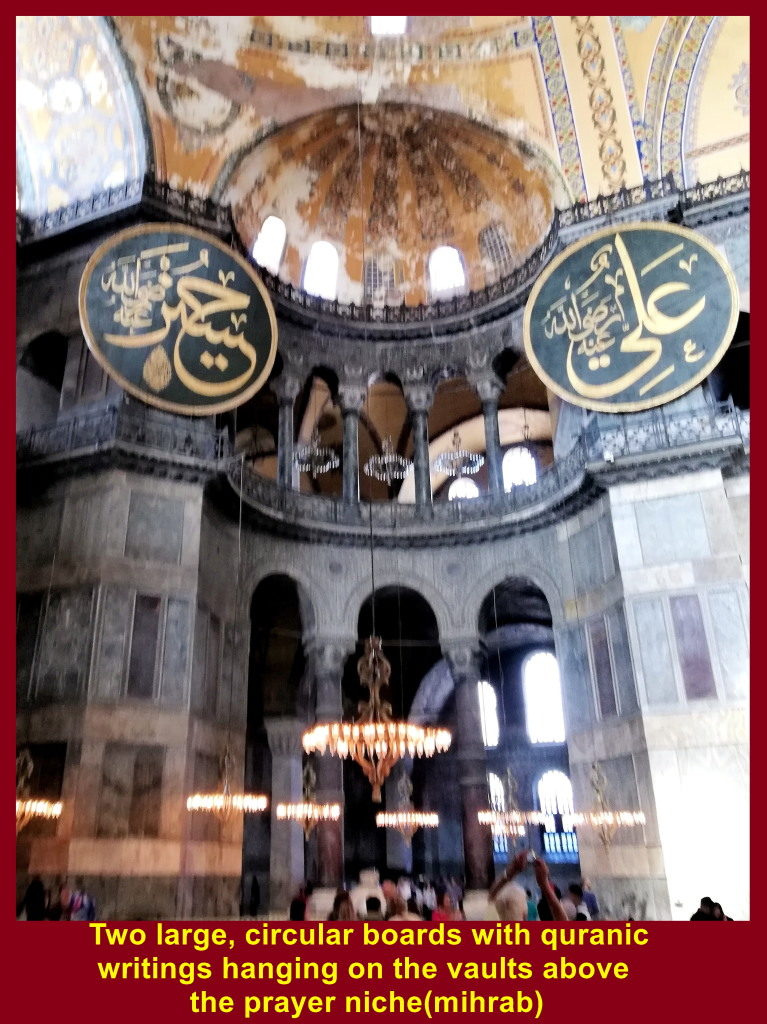
There were another two large circular boards with quranic writings hanging on the vaults above the back of the nave in Hagia Sophia Museum.
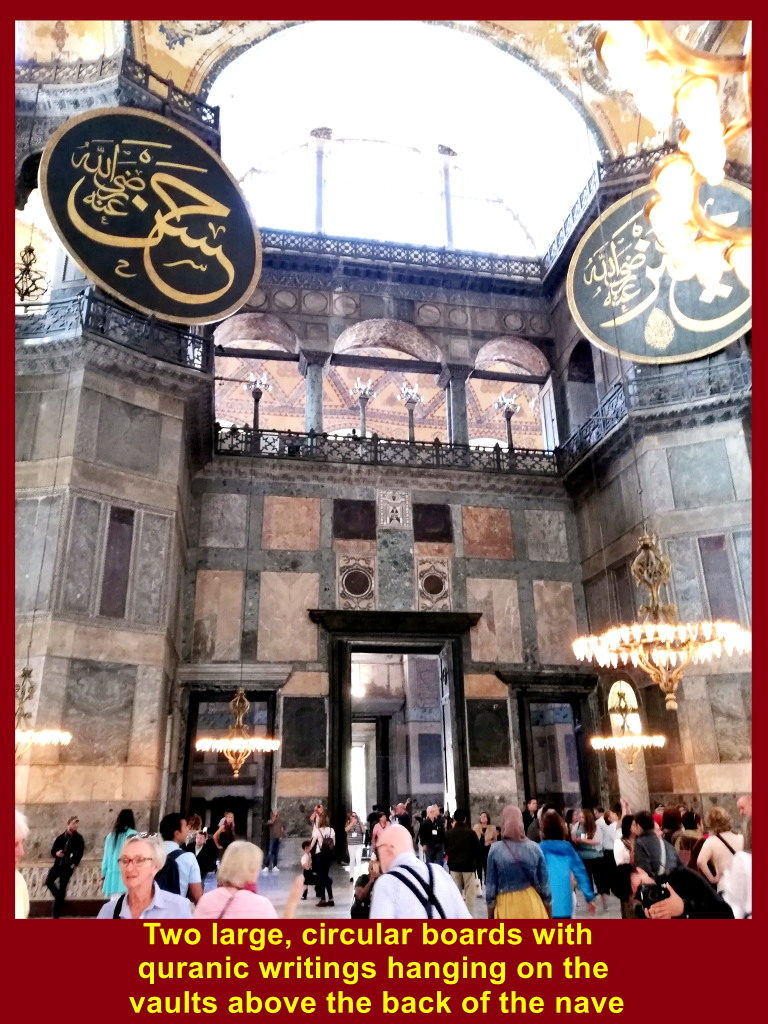
The inner part of a large dome above the nave of Hagia Sophia Museum was written with quranic verses.
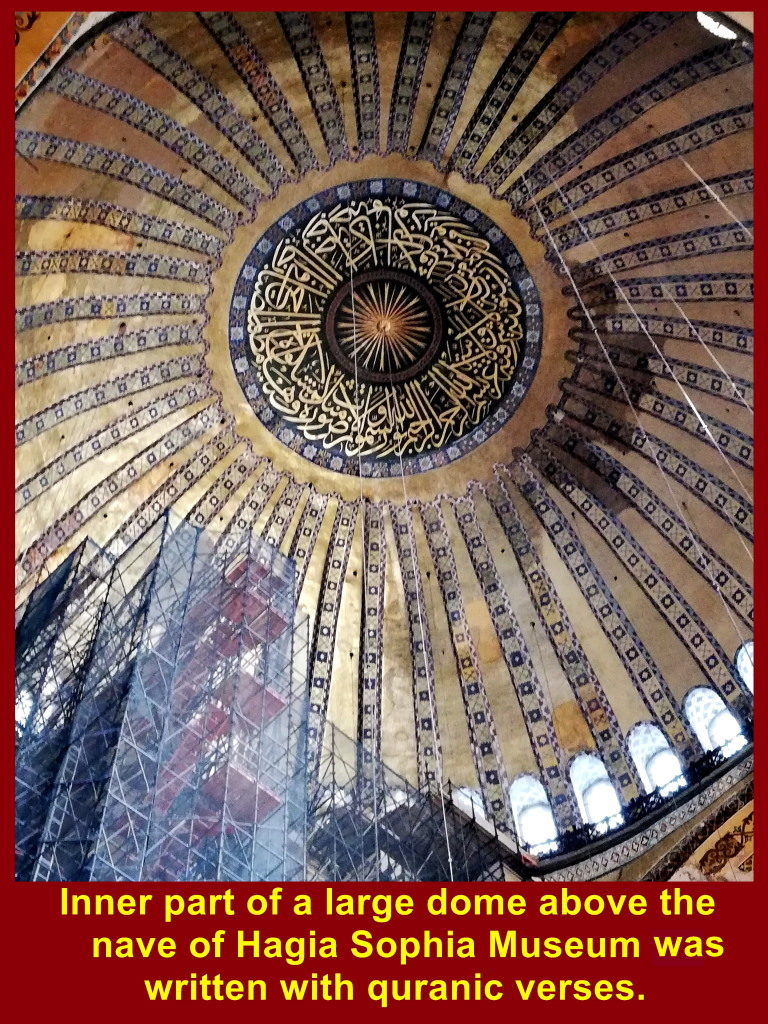
Upper Gallery
The ceilings of the upper gallery of Hagia Sophia Museum were richly painted with motifs.
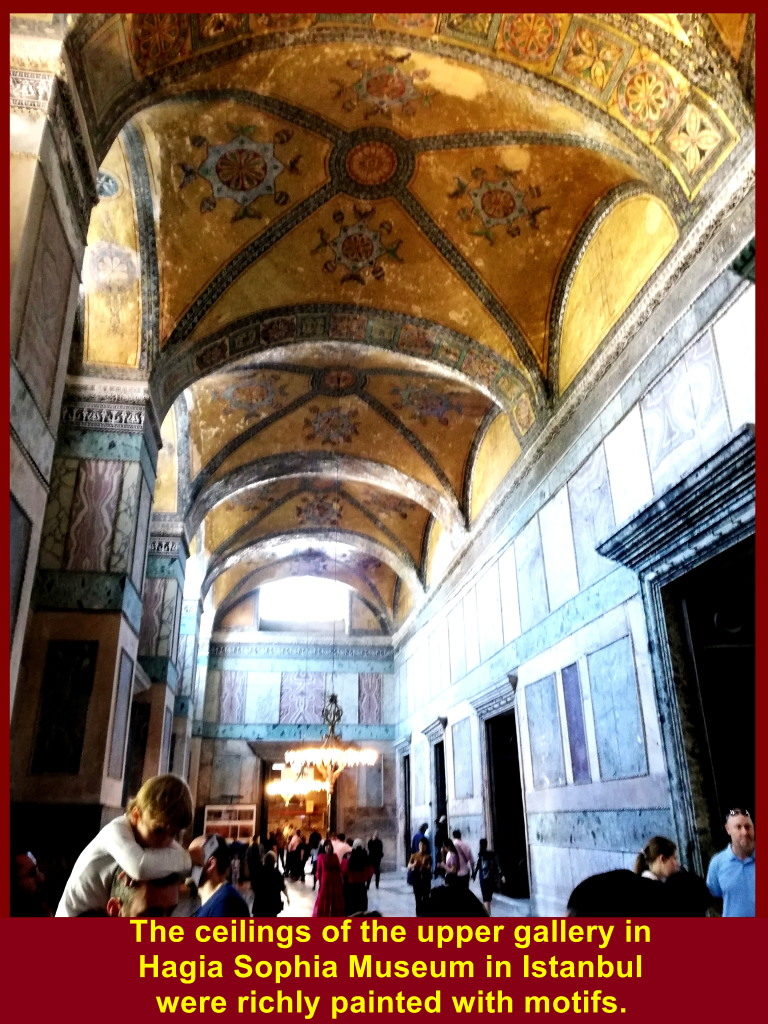
Marble-Stone Ramp
There was a ramp covered with smooth marble-stones for visitors to go up to the upper gallery of Hagia Sophia or Ayasofya Museum.
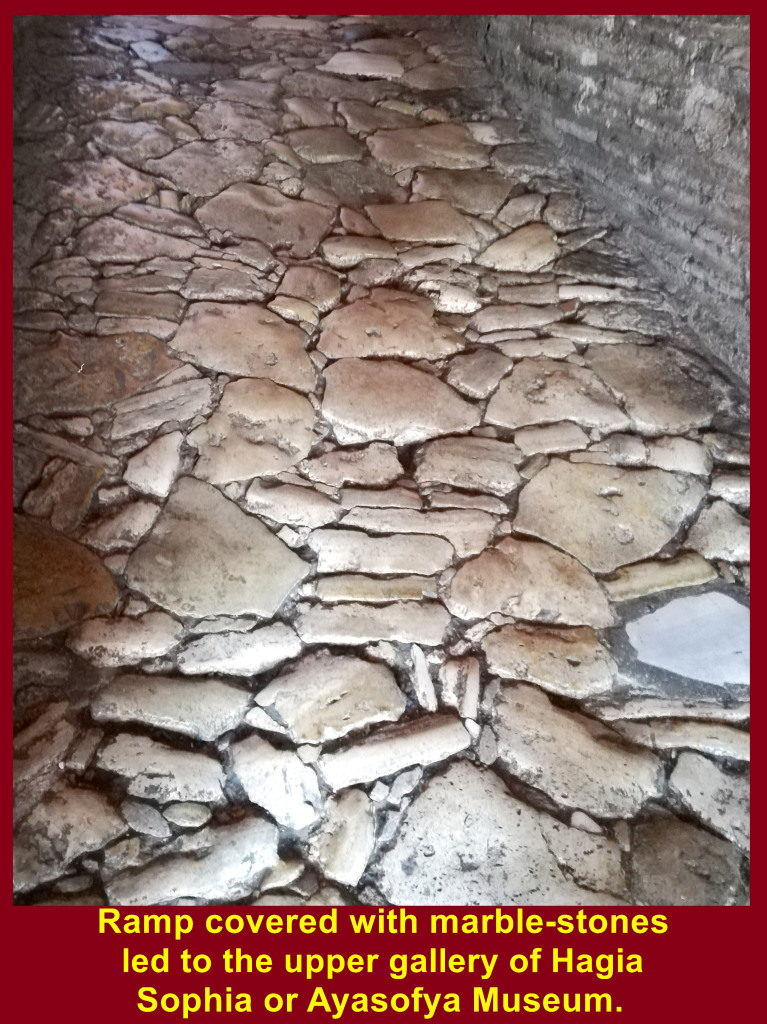
Prayer Niche(Mihrab)
View of the prayer niche(mihrab) in the background as seen from the upper gallery of Hagia Sophia Museum in Istanbul.
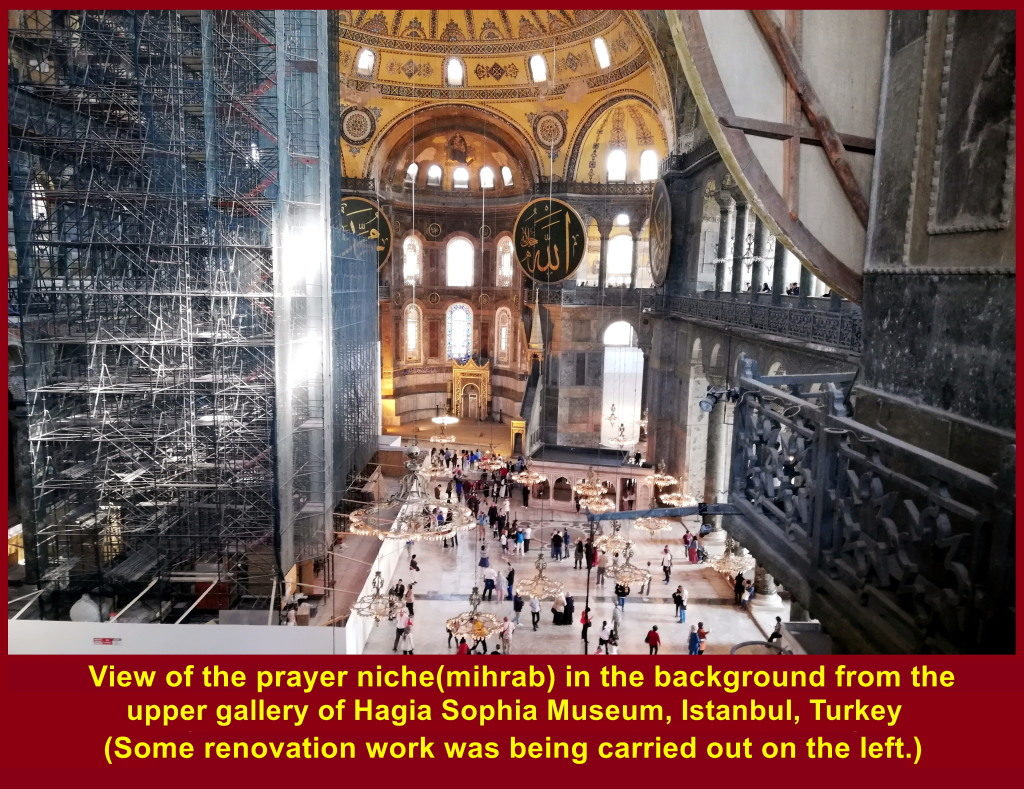
Marble Wall
On the upper floor of Hagia Sophia Museum there was a marble wall of the 6th. Century separating the Emperor’s private chambers from the meeting chamber for church members.
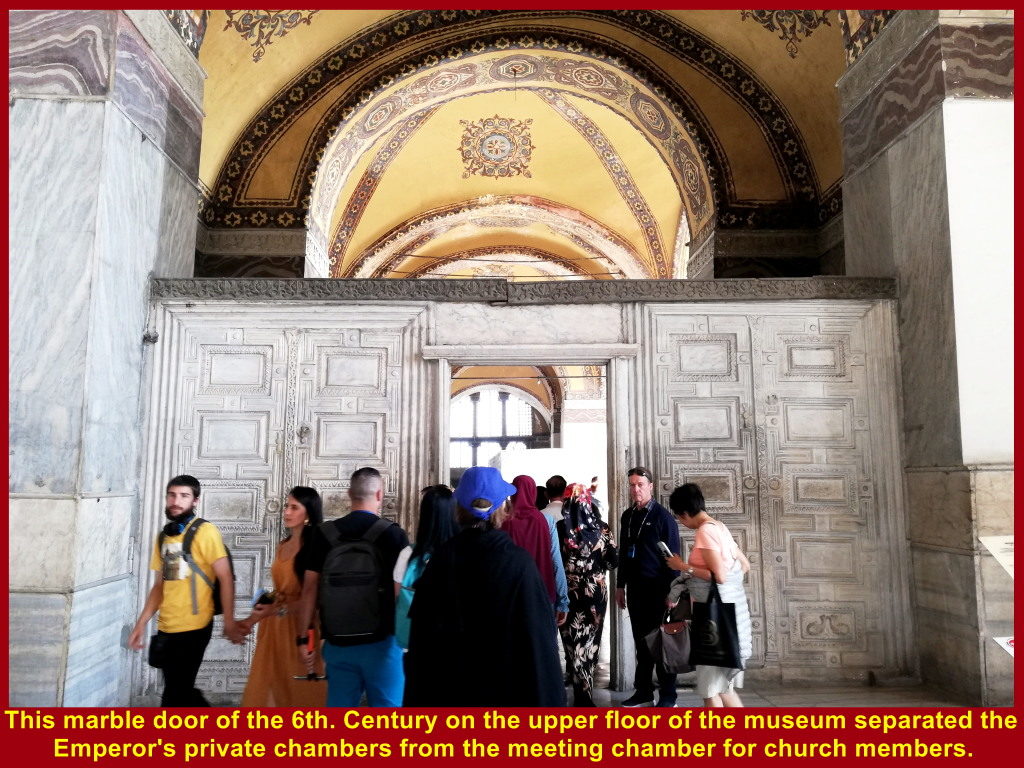
Coloured Mosaic Murals
In the upper gallery there were several coloured mosaic murals on the walls with pictures of Christian religious figures. But they were partially removed when the cathedral was transformed into a mosque by the Ottoman Empire in 1453.
Here are some of the vandalized mosaic murals.
(i) The damaged mosaic mural of Christ with a book flanked by John and Virgin Mary or “Deesis”
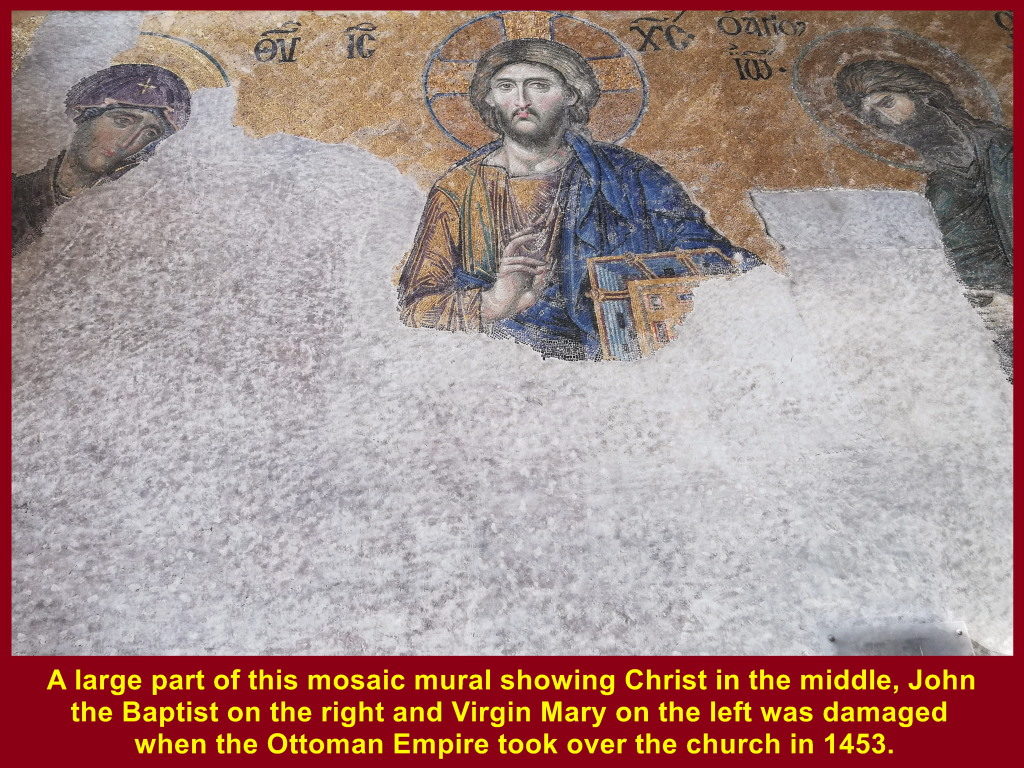
(ii) The damaged mosaic mural of “Deesis” should have been like the picture below.
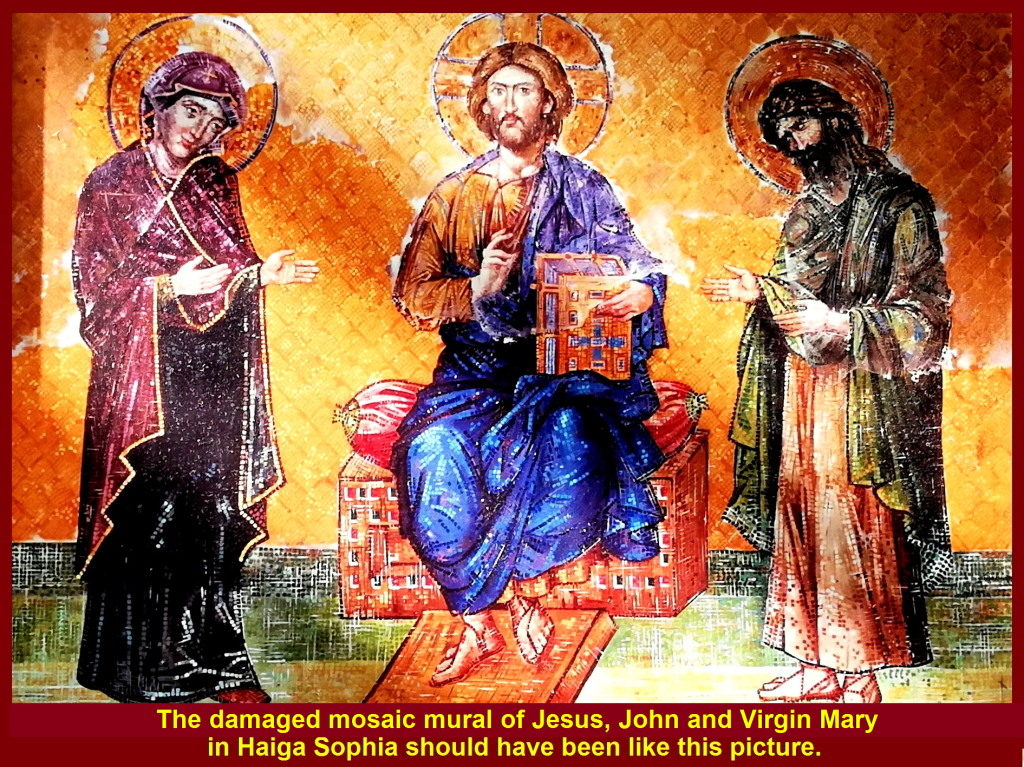
(iii) The lower part of the mosaic mural of Virgin Mary with her child, Emperor John II and his wife, Eirene, was damaged.
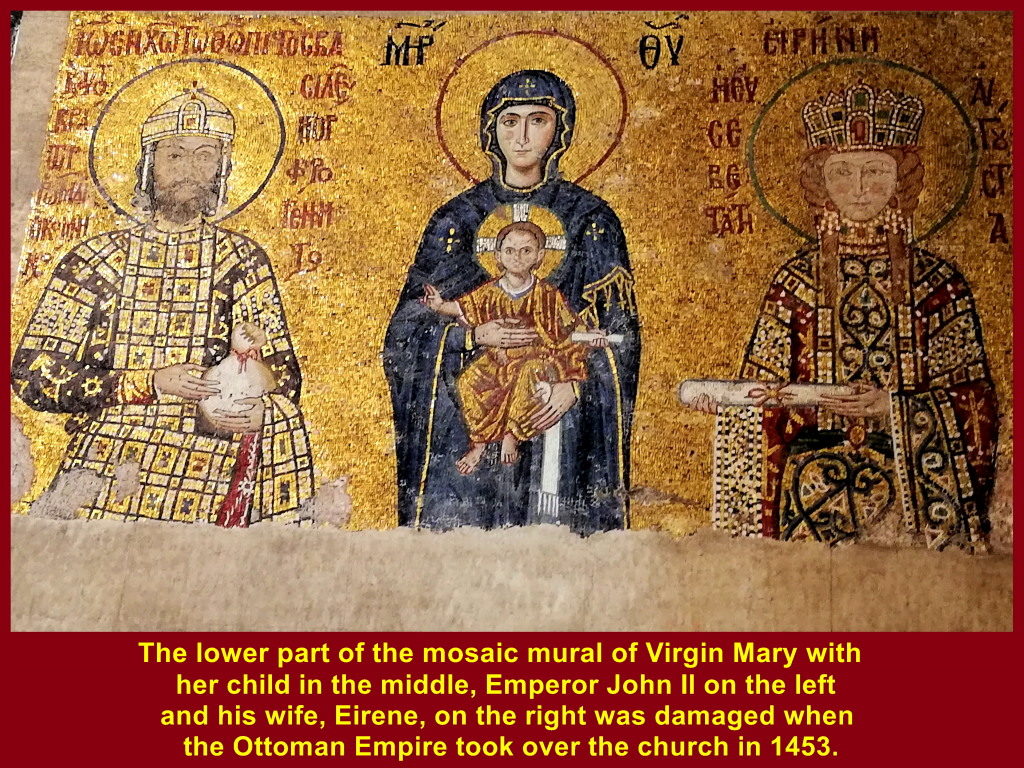
(iv) Similarly, the lower part of the mosaic mural of Christ, Emperor Constantine IX Monomachos and Empress Zoe was damaged when the Ottoman Empire took over the cathedral in 1453.

Untouched Columns
Some columns in Hagia Sophia Museum were untouched by the Byzantine Empire, as shown below.
(i) A column in Hagia Sophia Museum was untouched when the Ottoman Empire took over the cathedral in 1453.
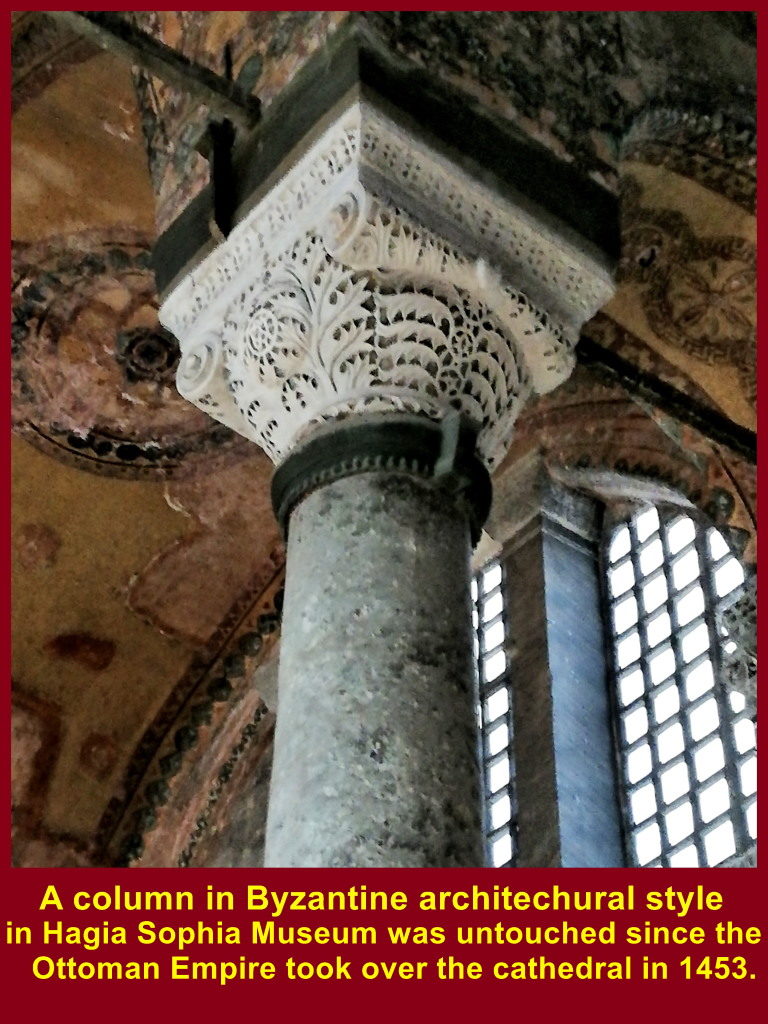
(ii) Another column in Hagia Sophia Museum was untouched when the Ottoman Empire took over the cathedral in 1453.
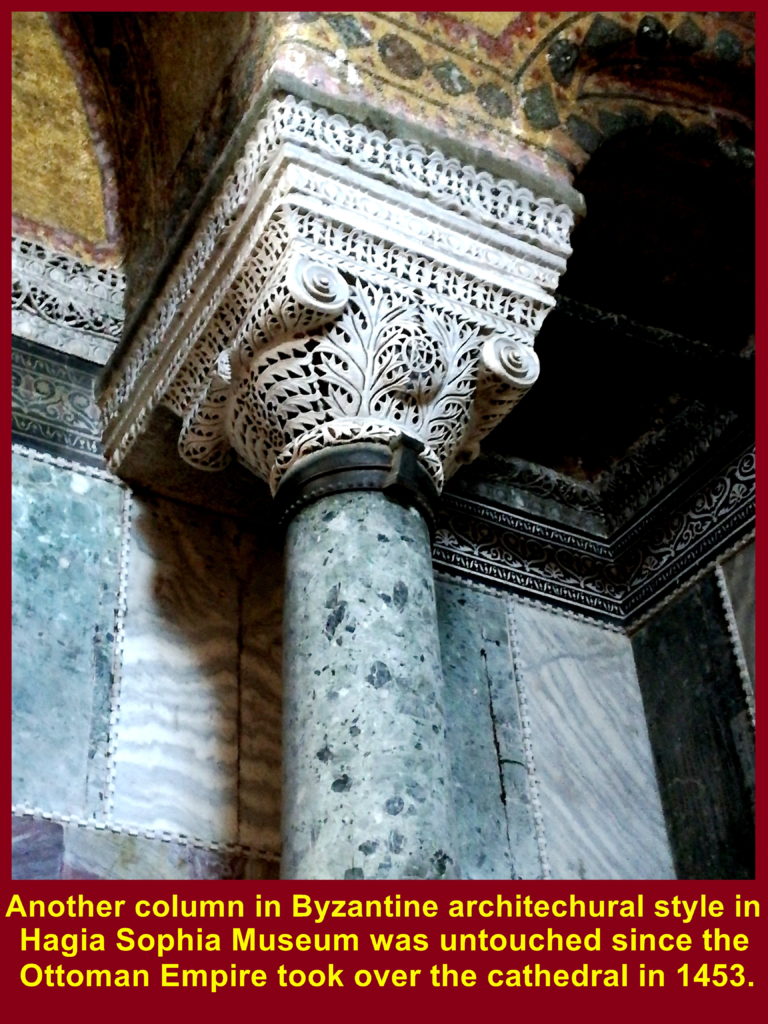
Removal of Christian Images
Christian images were removed from all the pillars and walls in Hagia Sophia Museum since the Ottoman Empire ruled Turkey in 1453.
(i) A Christian image was removed on the pillar in Hagia Sophia Museum when the Ottoman Empire ruled Turkey since 1453.
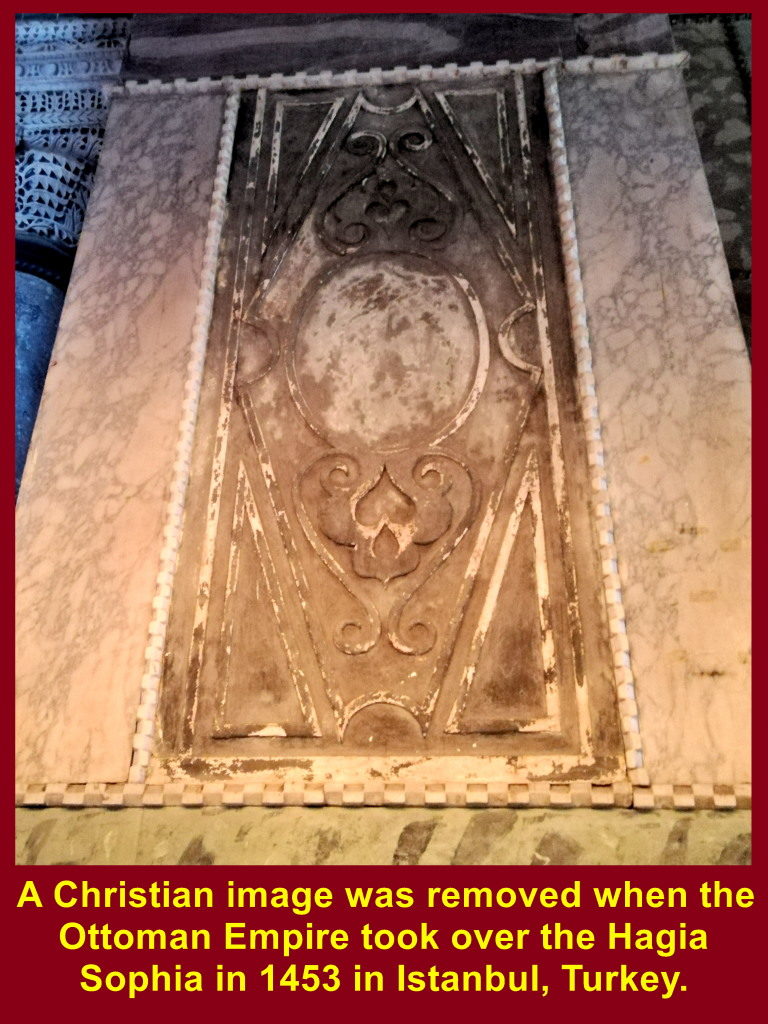
(ii) Another Christian image was removed from another pillar in the museum since the Ottoman Empire ruled Turkey in 1453.
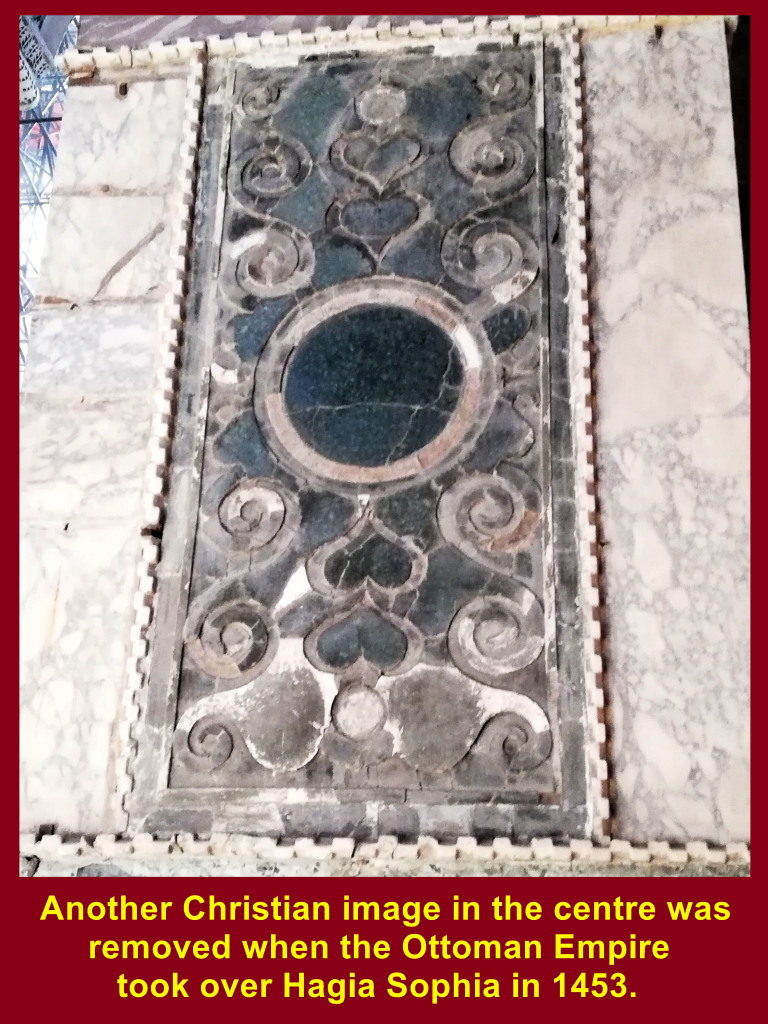
(iii) A column with a cross was removed from Hagia Sophia Museum and left outside the cathedral since the Ottoman Empire ruled Turkey in 1453. A cross is a symbol of Christianity.
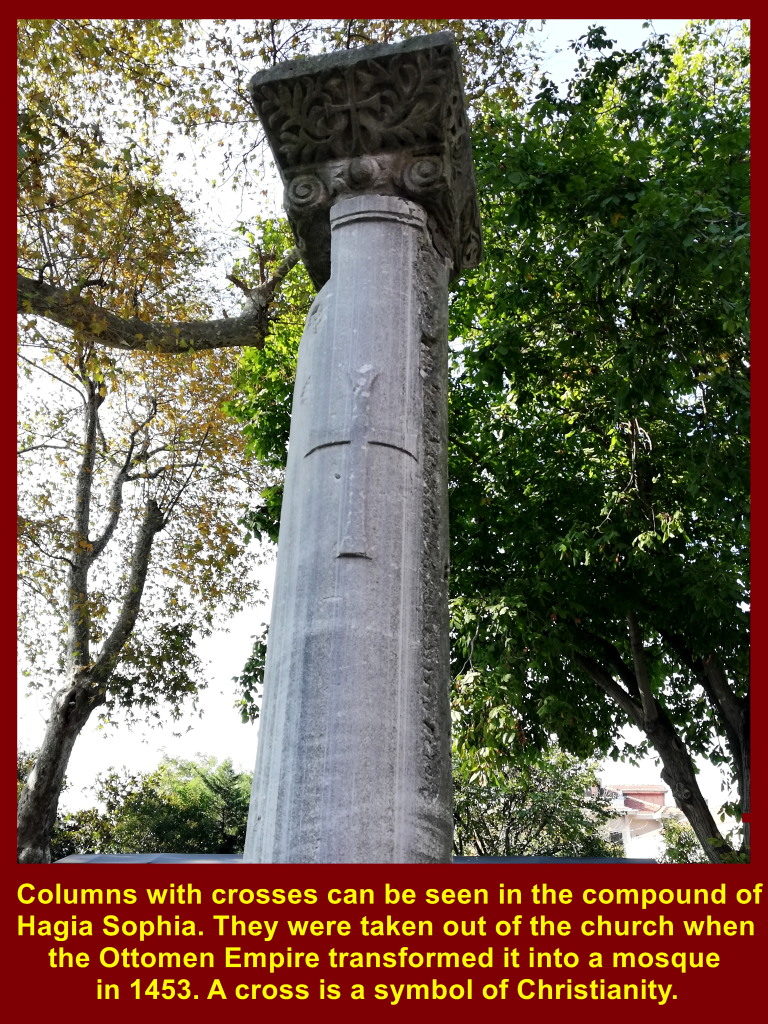
(iv) Many parts of Hagia Sophia with Christian symbols or images were excavated in the compound of the cathedral when it became a museum in 1935.
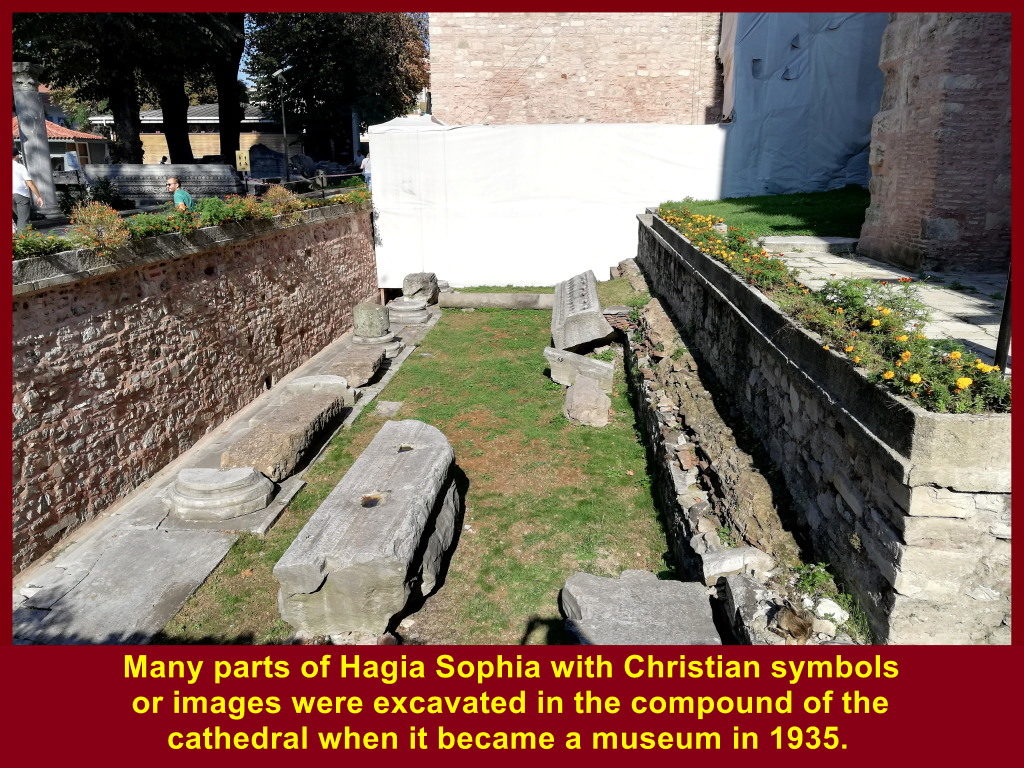
Minarets
When the Ottoman Empire took over the cathedral, Hagia Sophia, in Istanbul, in 1453, it was transformed into a mosque with minarets being erected.
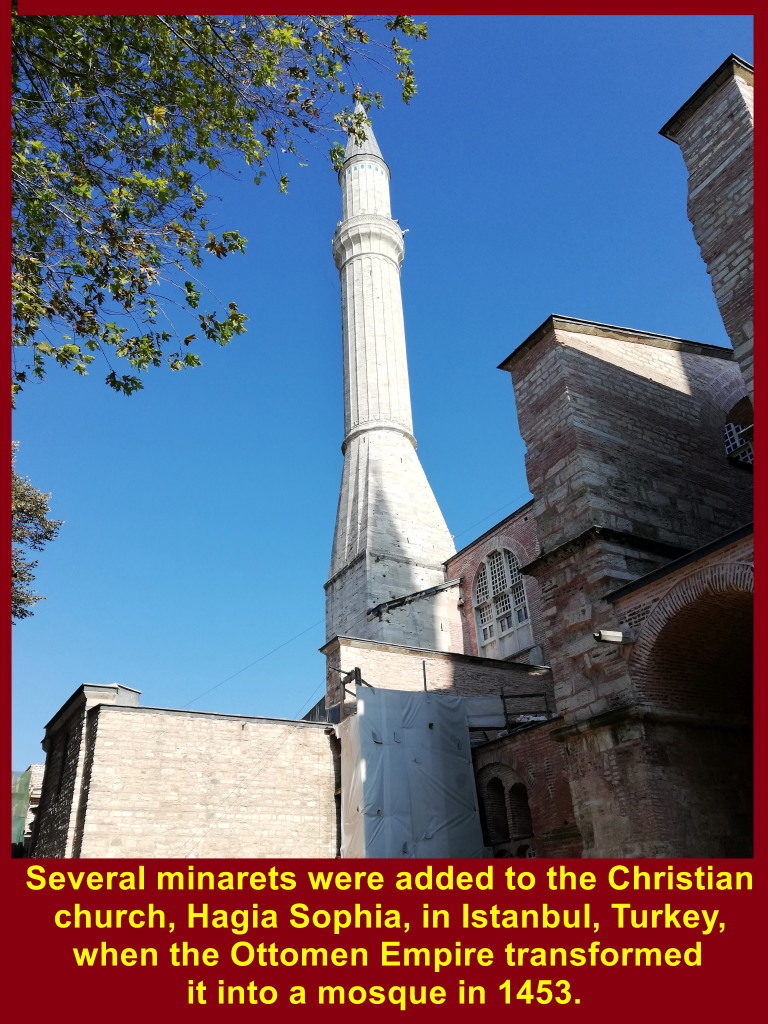
Topkapi Palace Museum
At 2.50 p.m. we left Hagia Sophia Museum and walked to a palace nearby. It is known as Topkapi Palace where the Ottoman Empire rulers stayed from 1478 until 1853 and high ranking officers stayed from 1853 until 1924. Since 1924 the palace becomes a museum for visitors to see.
View of Topkapi Palace Museum and Marmara Sea in the distance as seen on a printed entrance ticket.
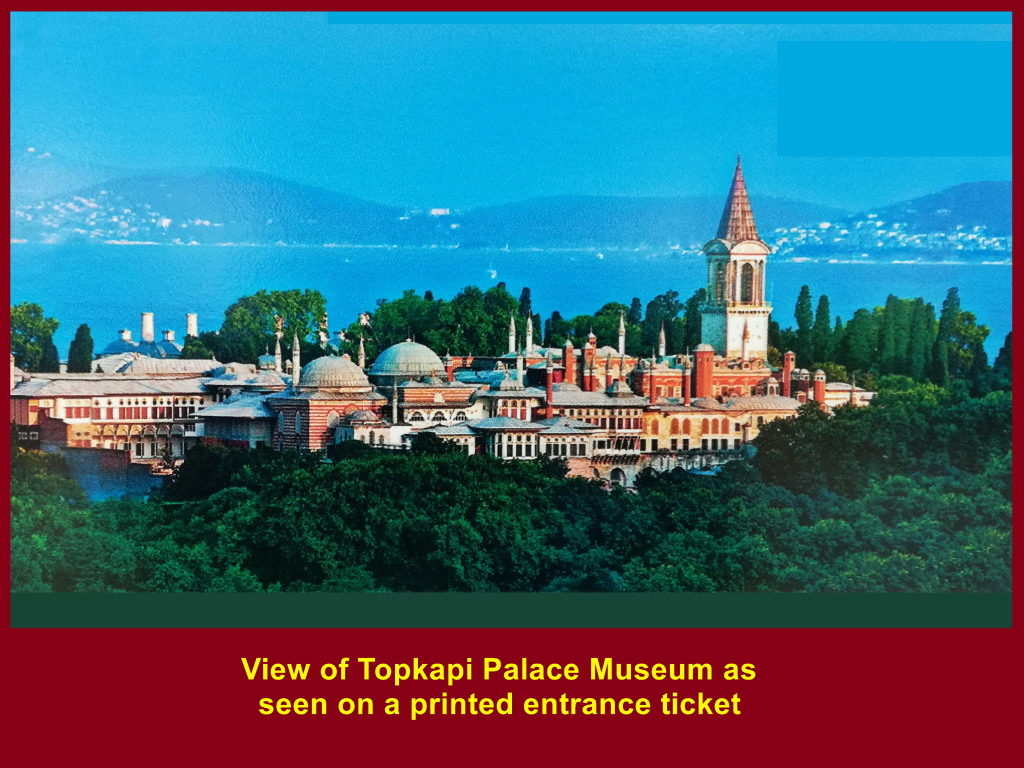
Imperial Gate is the main gate or first gate that allows visitors to enter Courtyard 1 of Topkapi Palace in Istanbul, Turkey.
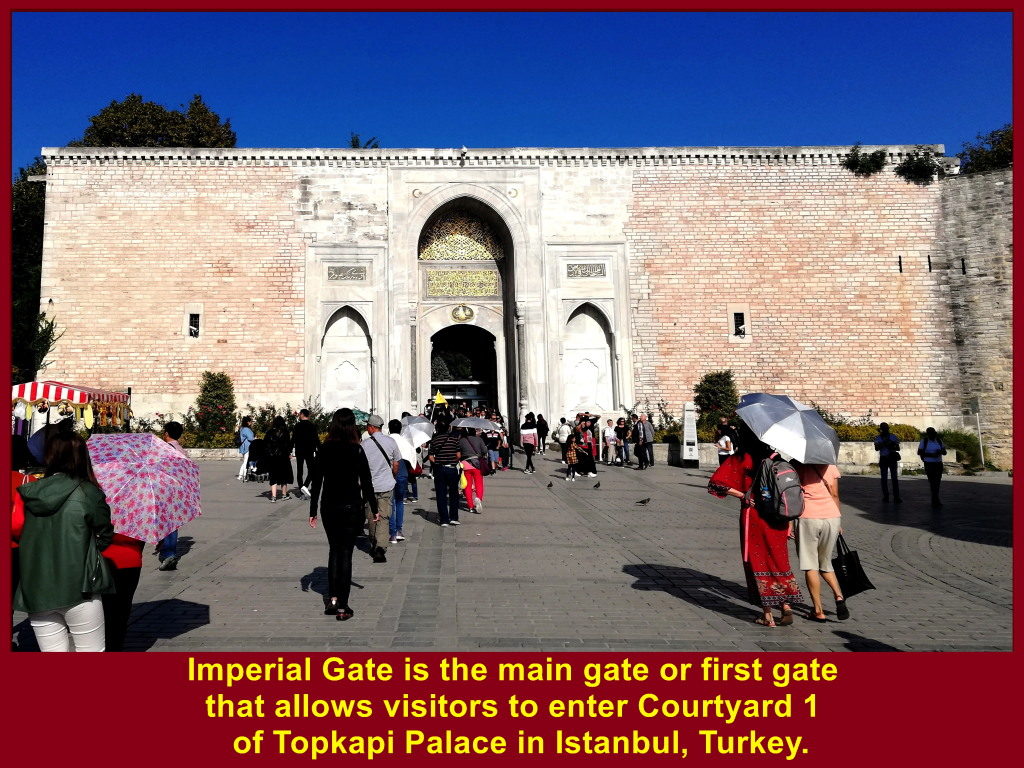
Gate of Salutaion is the second gate of Topkapi Palace that allows visitors to enter Courtyard 2.
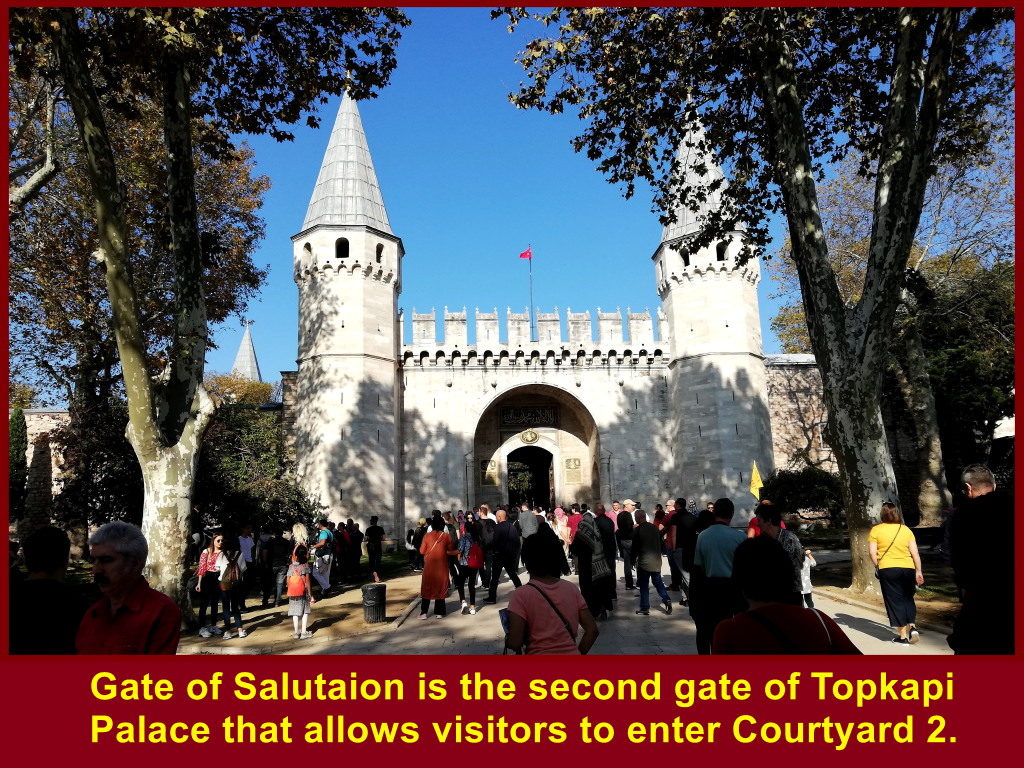
Imperial Kitchens with chimneys in Courtyard 2 of Topkapi Palace in Istanbul, Turkey
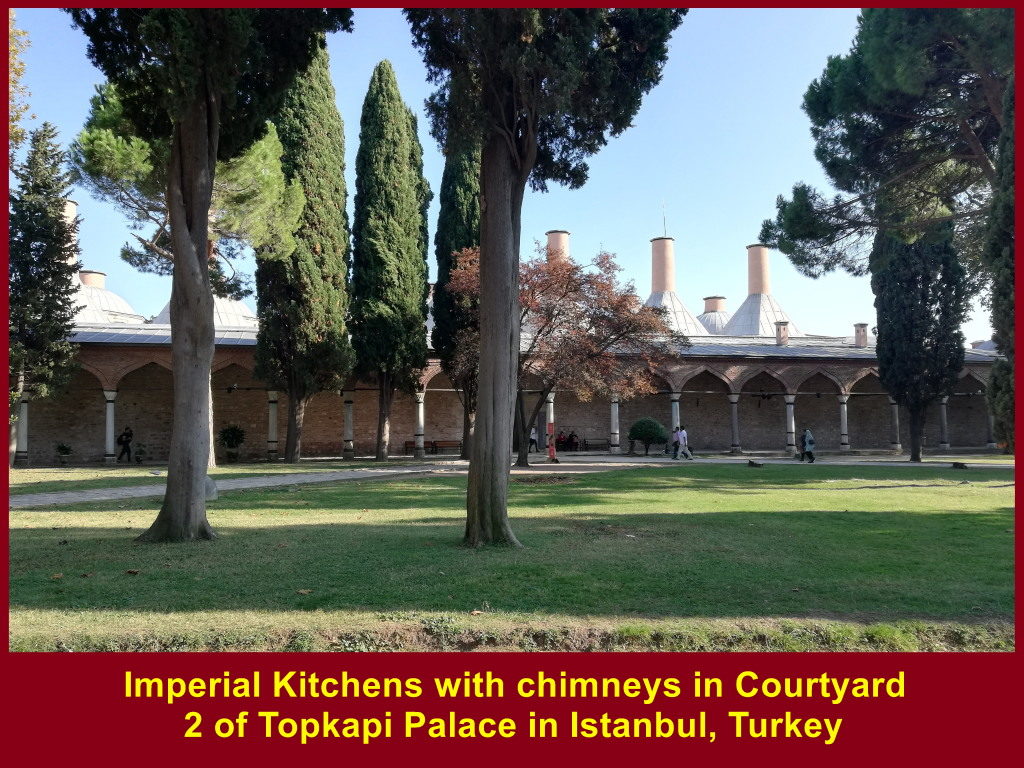
Imperial Council Hall, Harem, Imperial Stables and Imperial Kitchens are located in Courtyard 2.
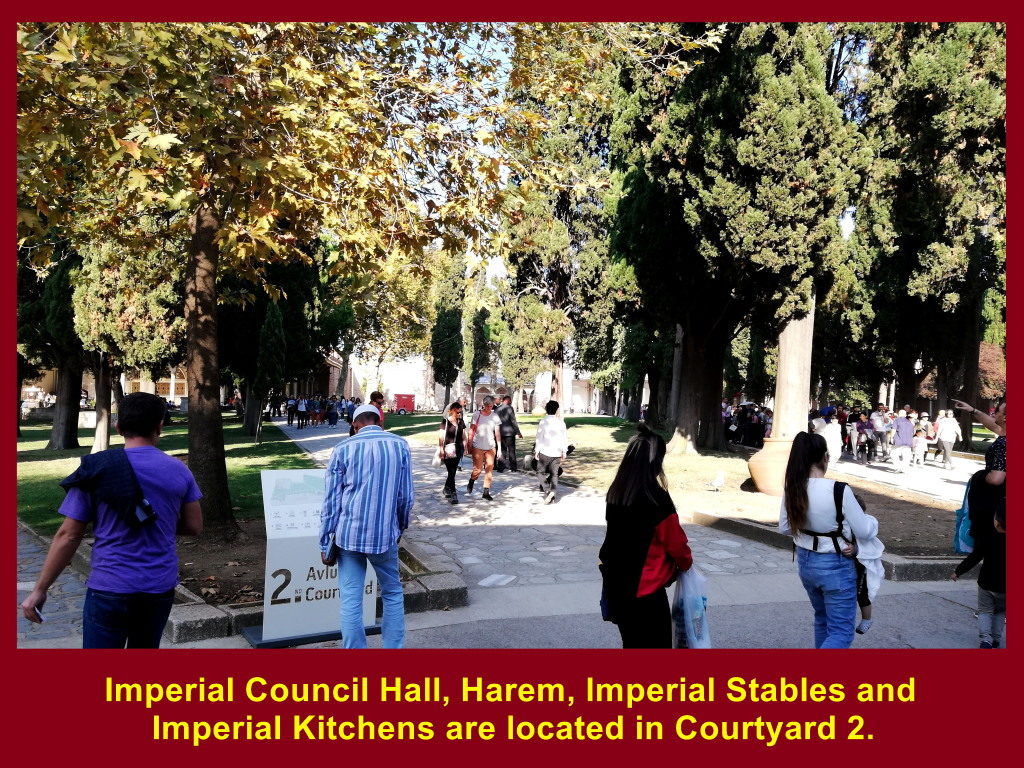
Imperial Kitchens with chimneys are in Courtyard 2 of Topkapi Palace in Istanbul, Turkey
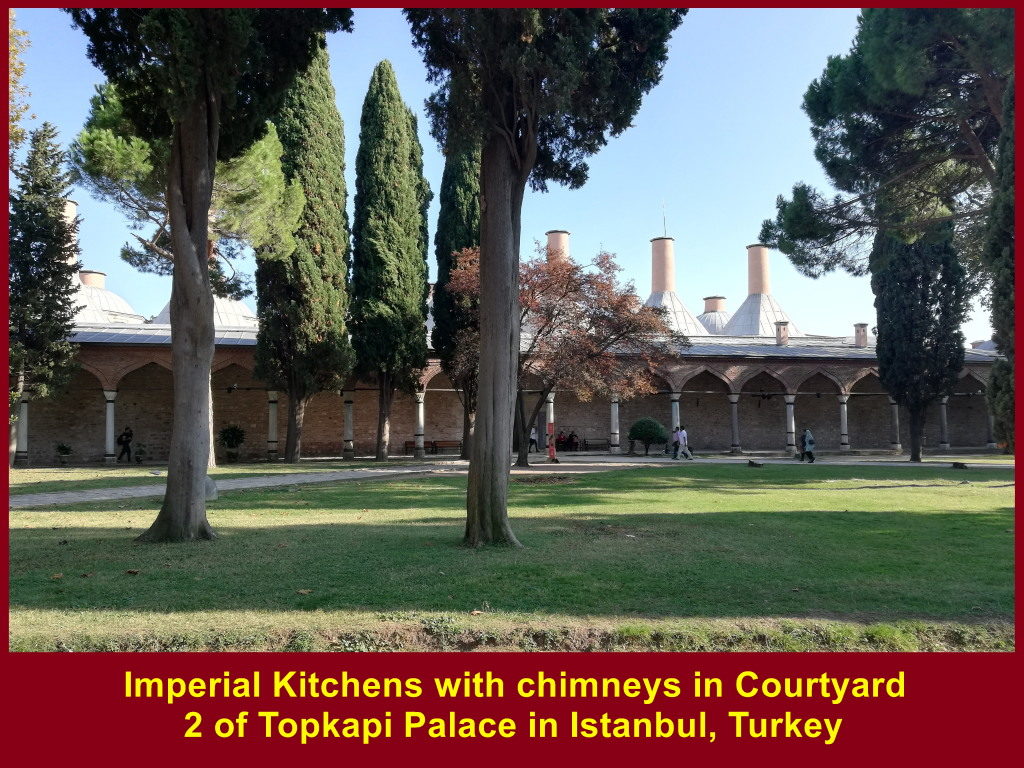
Harem or women’s quarter in Courtyard 2 of Topkapi Palace
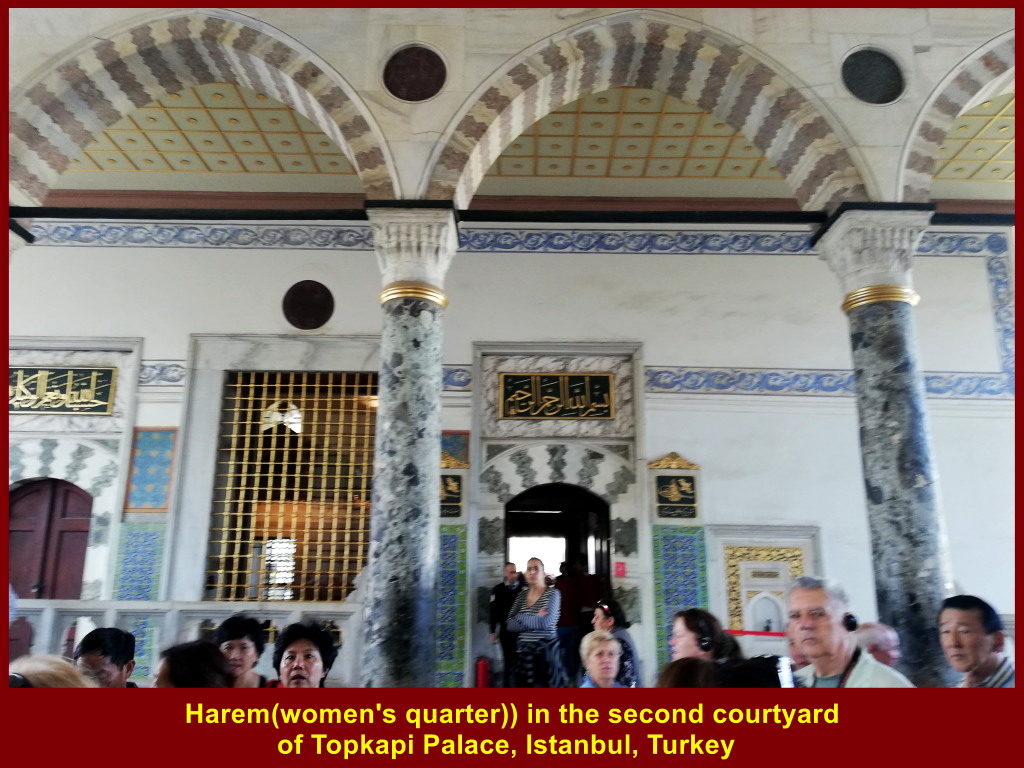
Imperial Council Hall in Courtyard 2 of Topkapi Palace was a place for informal gatherings of senior ministers presided over by the Sultan.
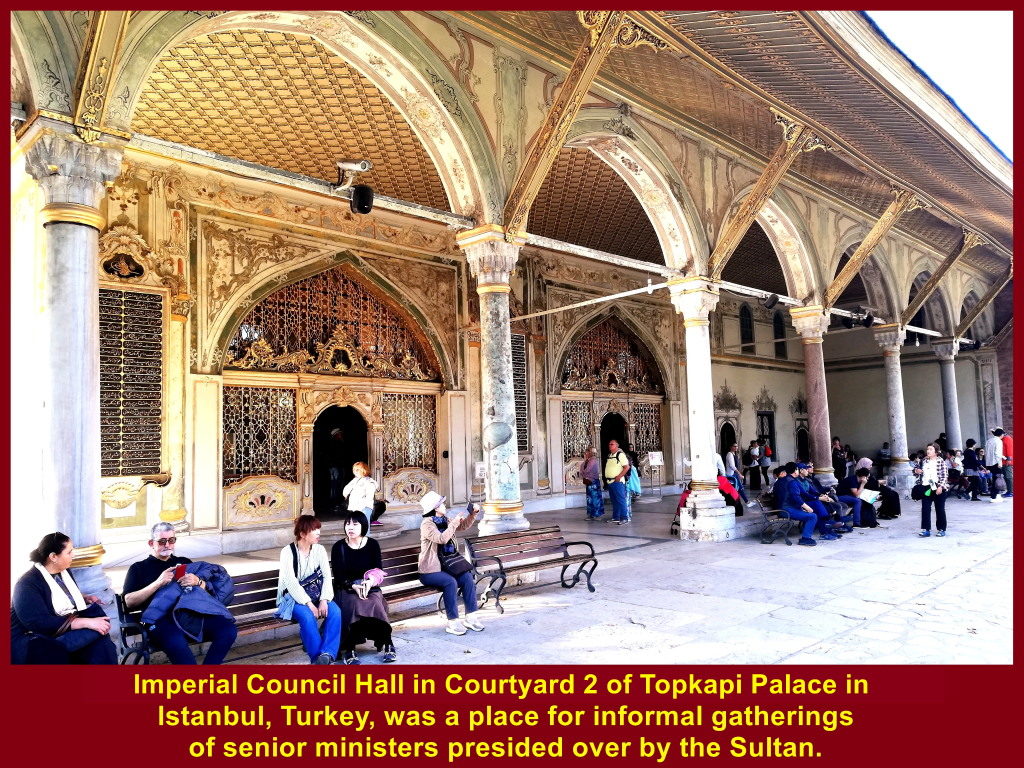
Informal gatherings of senior ministers presided over by the Sultan were held in Imperial Council Hall.
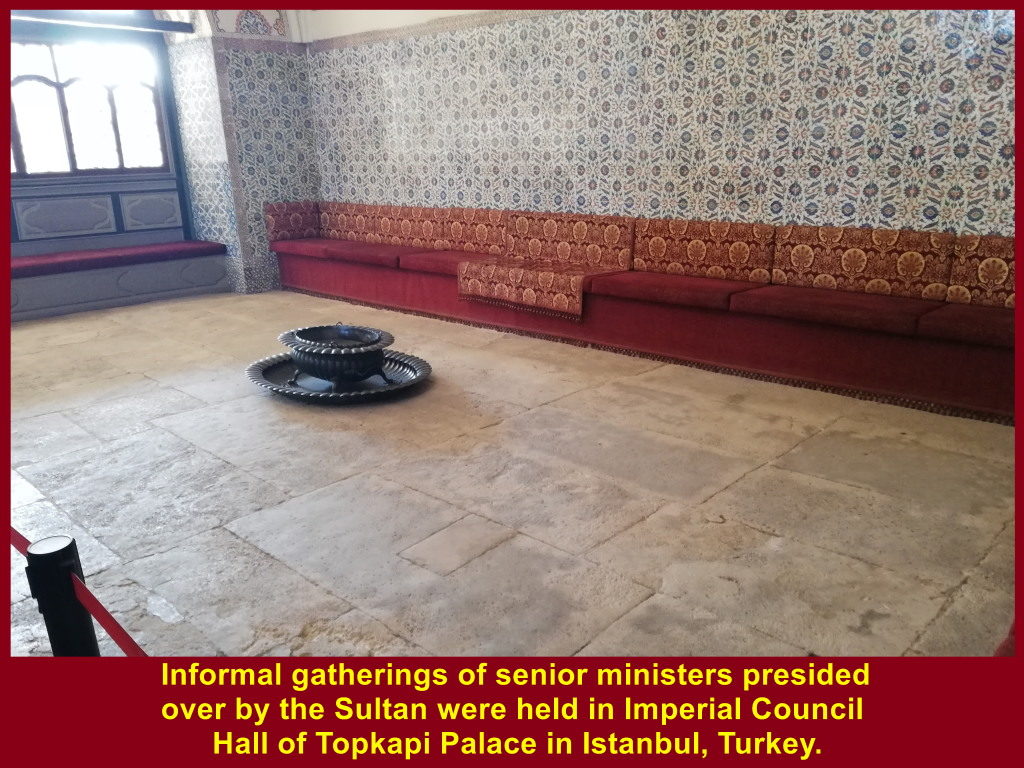
A colourful, gilded wall in the Imperial Council Hall of Topkapi Palace
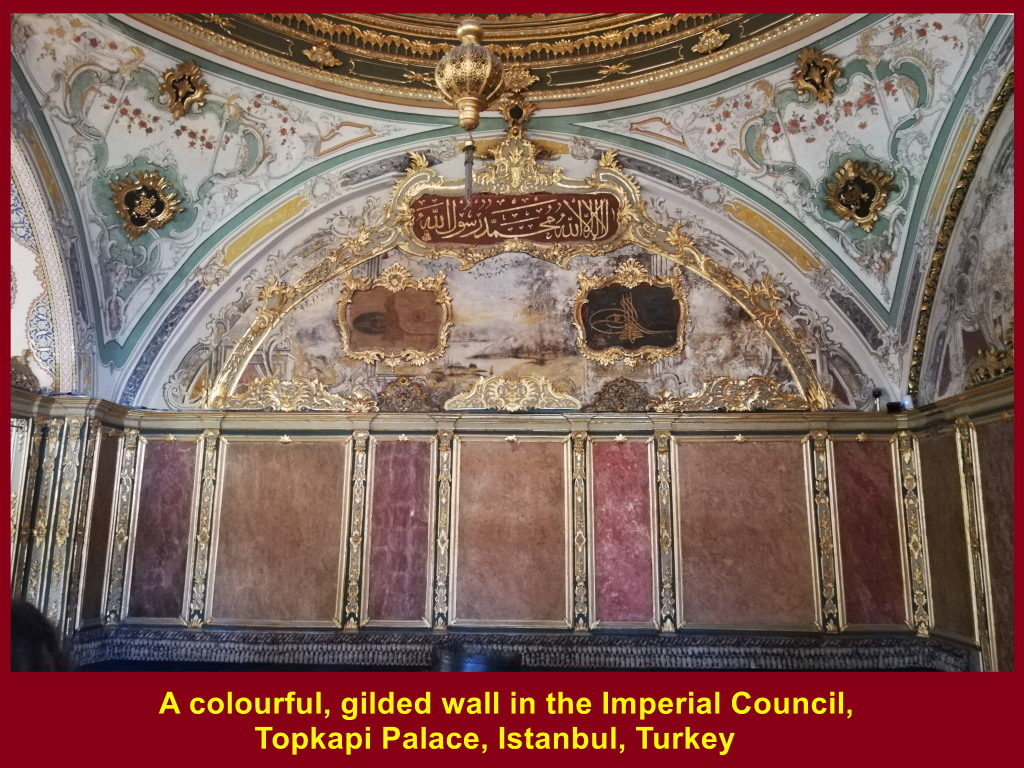
Smart-looking guards on horses can be seen in Courtyard 2 of Topkapi Palace
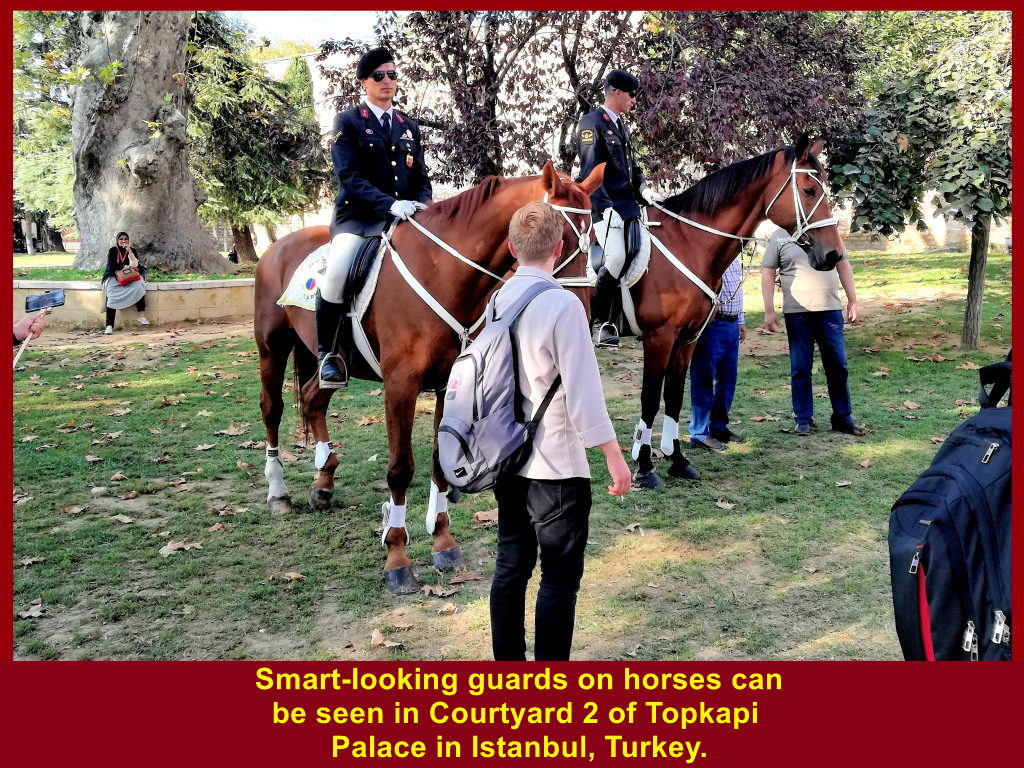
Gate of Felicity is the third gate that allows visitors to enter Courtyard 3 of Topkapi Palace in Istanbul, Turkey.
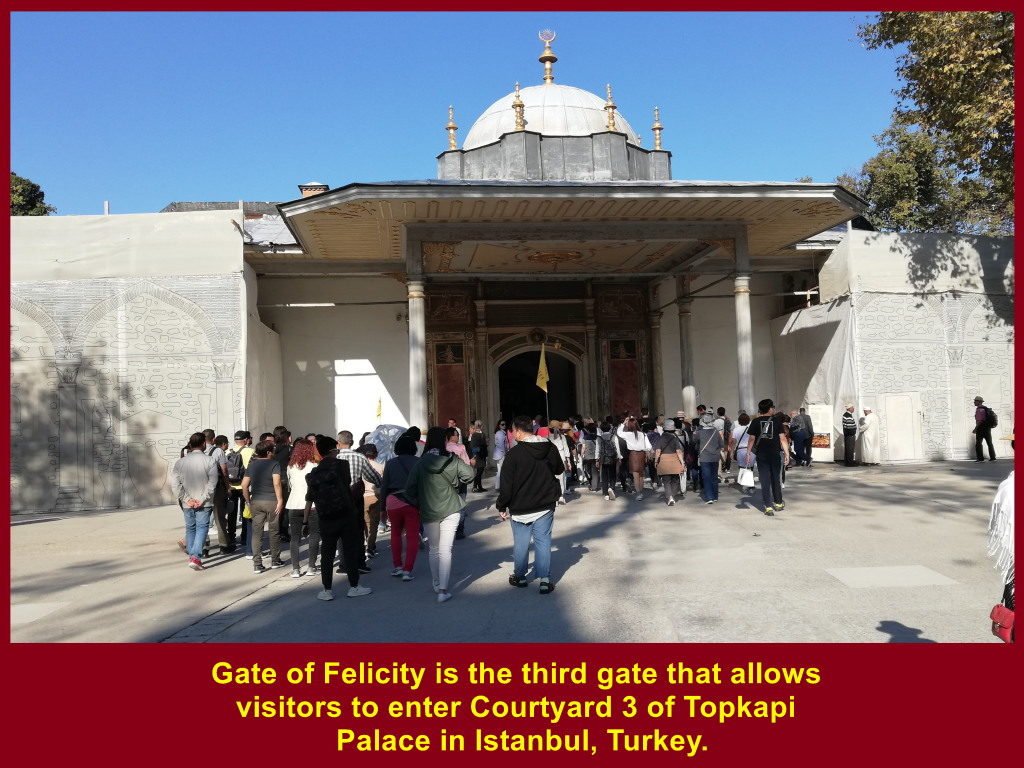
Audience Hall, Imperial Treasury, Library of Sultan Ahmet III and Library of Manuscripts are located in Courtyard 3.
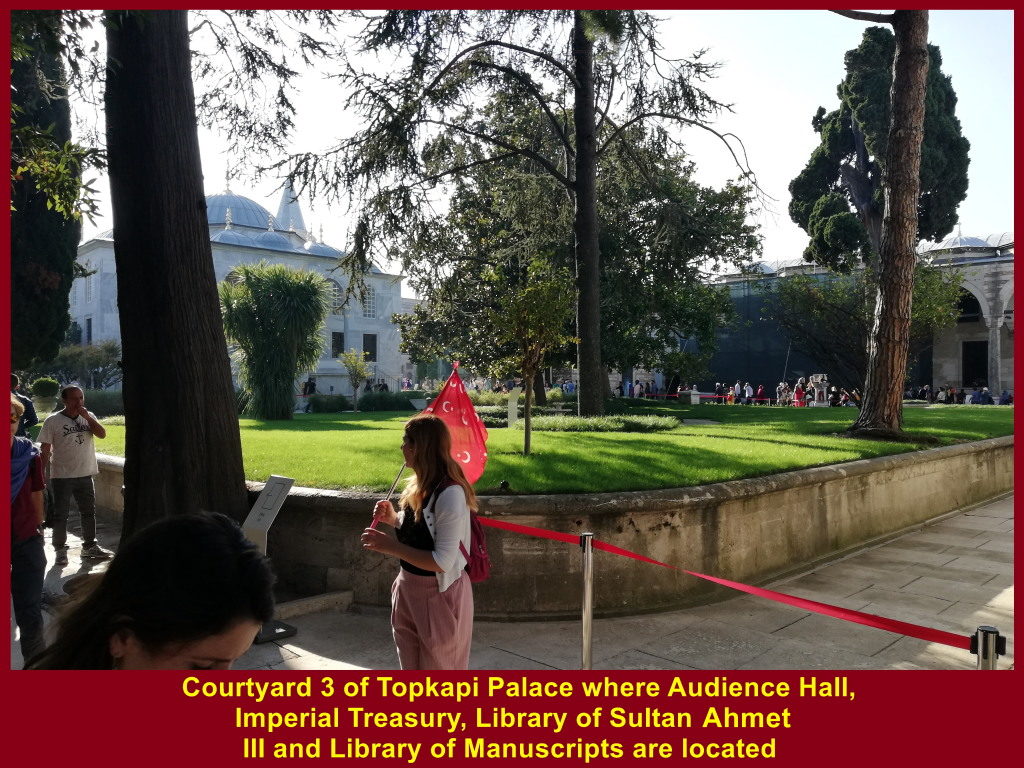
Audience Hall or Chamber of Petitions is in Courtyard 3 of Topkapi Palace.
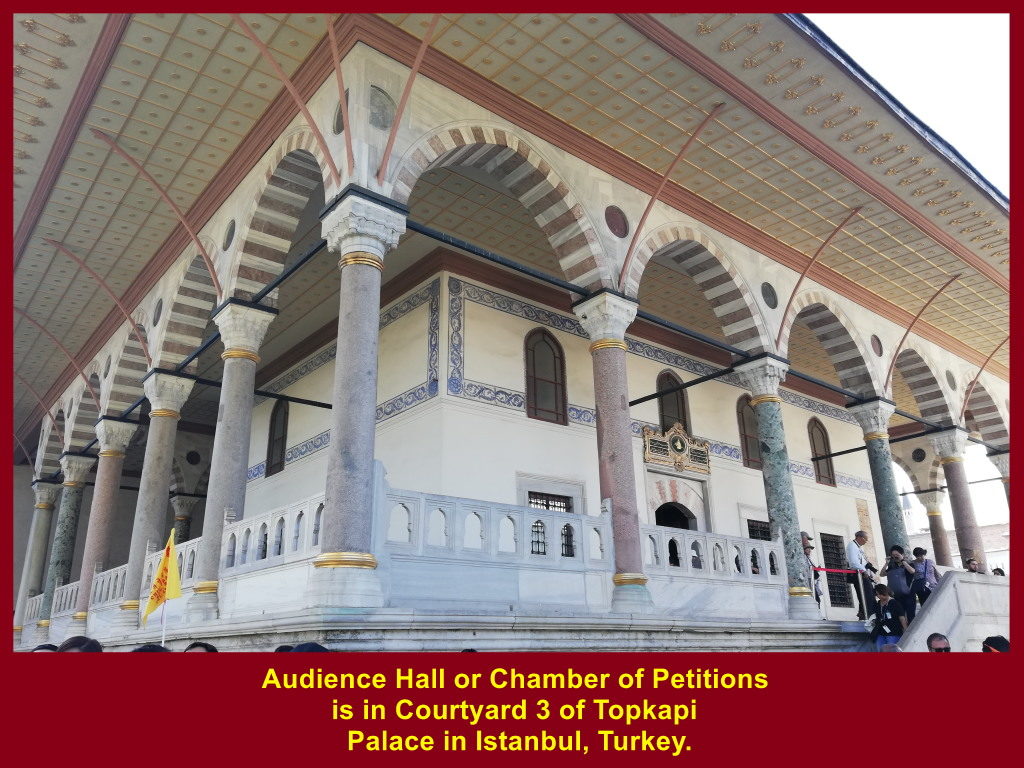
Library of Sultan Ahmet III or Inner Palace Library in Courtyard 3 of Topkapi Palace in Istanbul, Turkey.
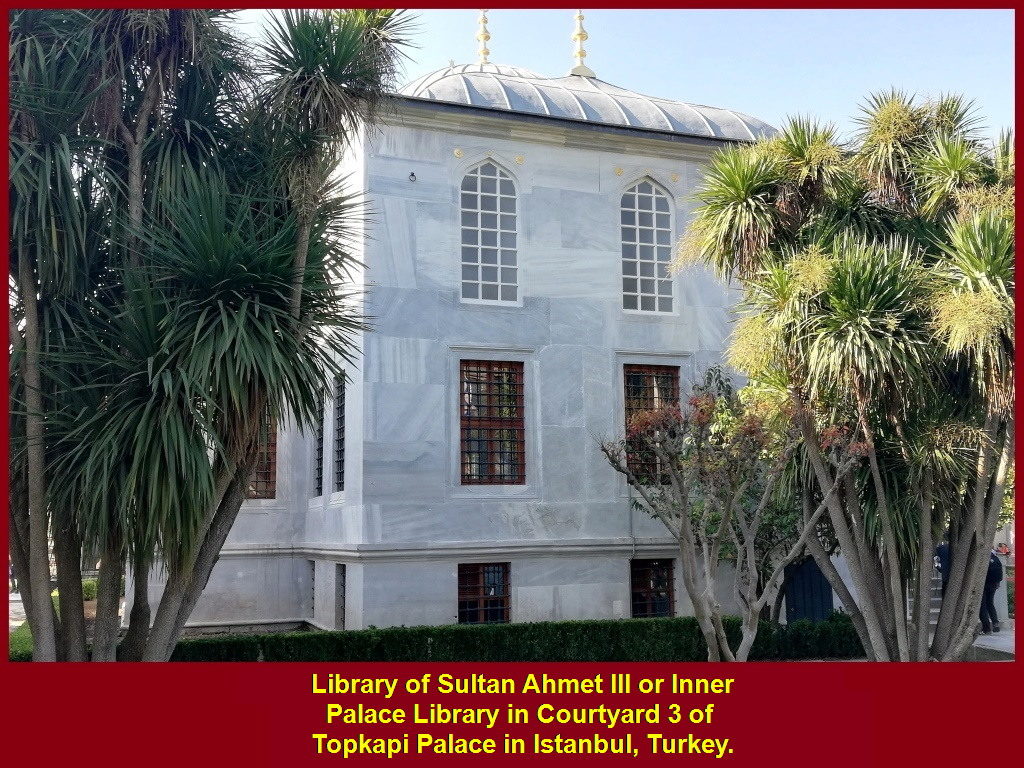
Interior of Library of Sultan Ahmet III in Topkapi Palace
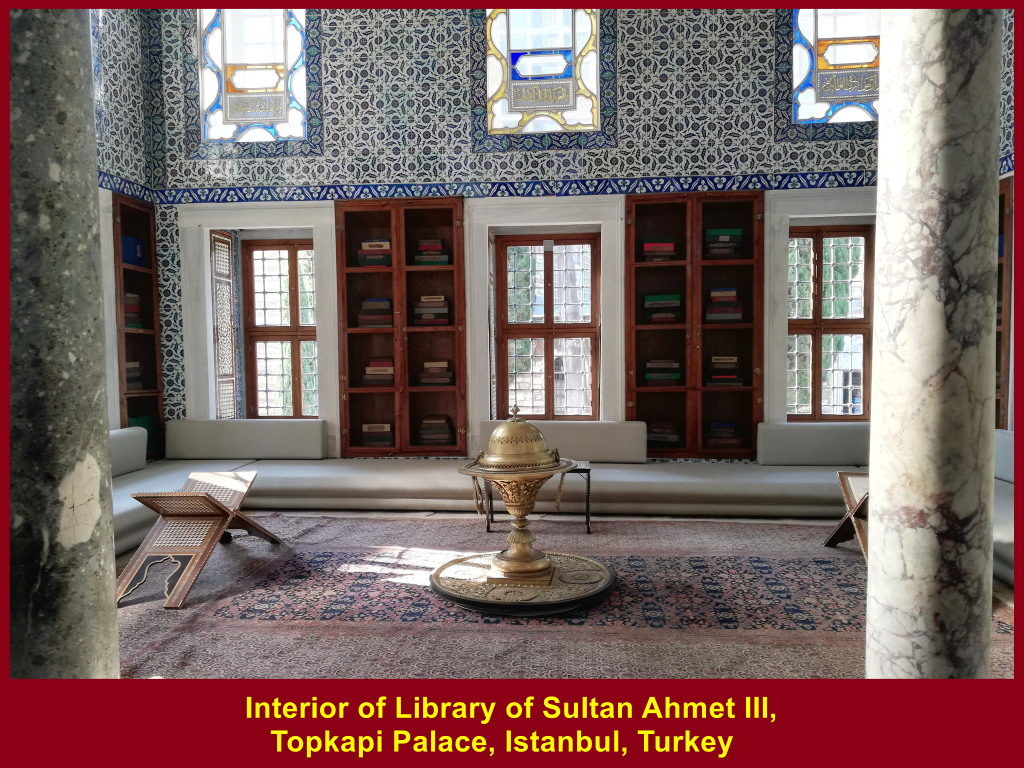
A model of a learned man in the Library of Sultan Ahmet III in Topkapi Palace
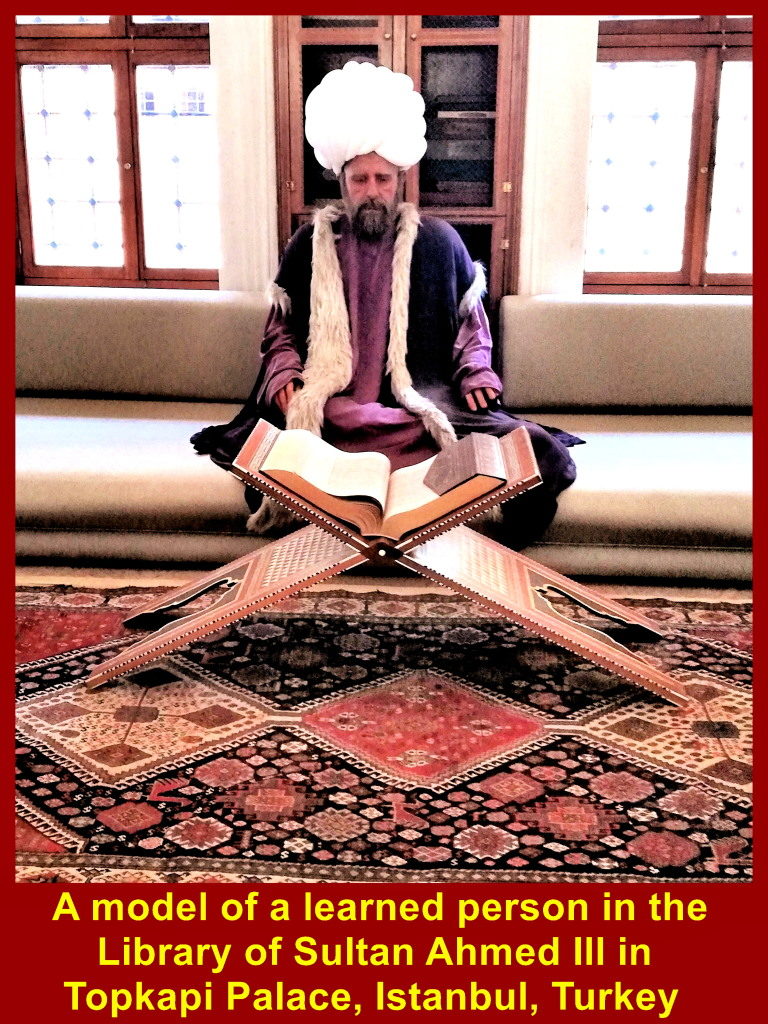
In Courtyard 4, there are Mecidiye Kiosk, Sofa Mosque, Wardrobe Room, Tower Gate, Circuncision Chamber, Chamber of the Physician, Bagdad Kiosk and Revan Kiosk.
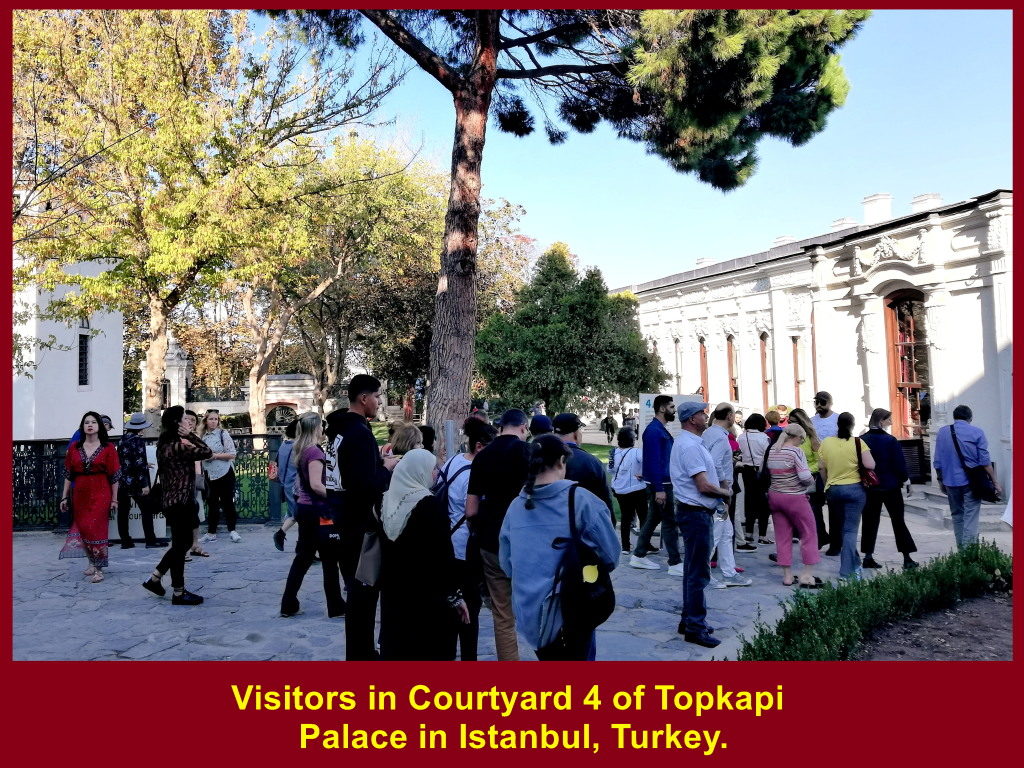
Mecidiye Kiosk
Mecidiye Kiosk in Courtyard 4 was built by Sultan Abdulmecid(1823-1961) in the 18th. Century for enthronement ceremonies and Sultans’ temporary residence in Topkapi Palace, Istanbul, Turkey.
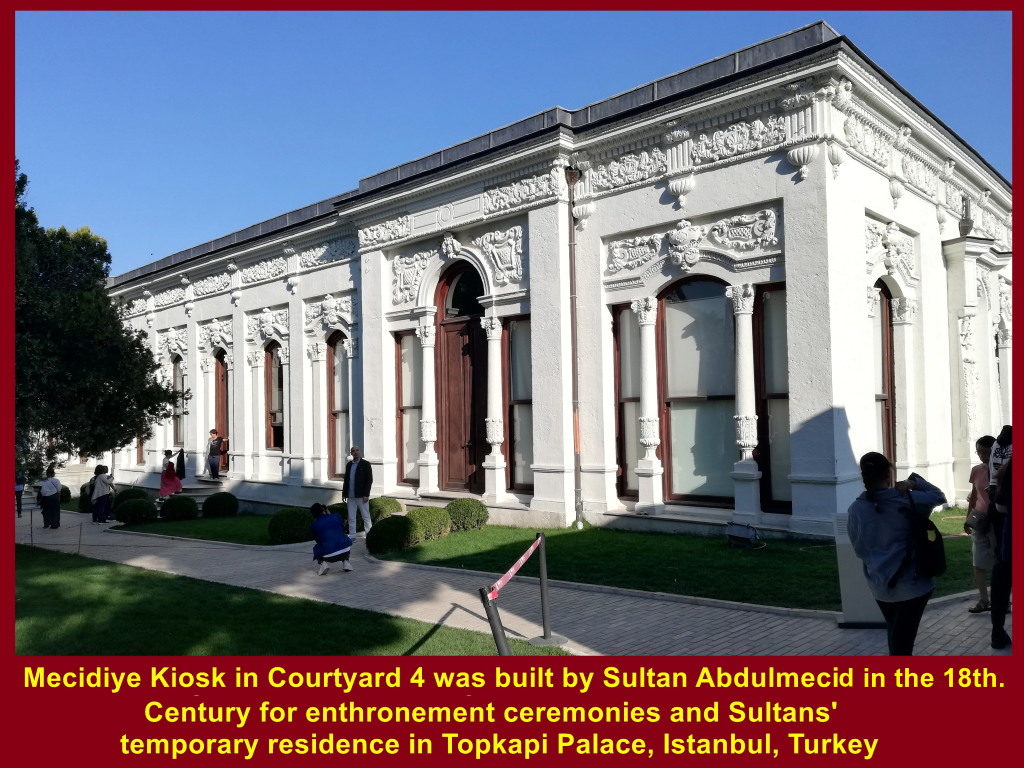
Wardrobe Room
Wardrobe Room in Courtyard 4 of Topkapi Palace was used by Sultan Abdulmecid(1823-1861) whenever he visited the palace.
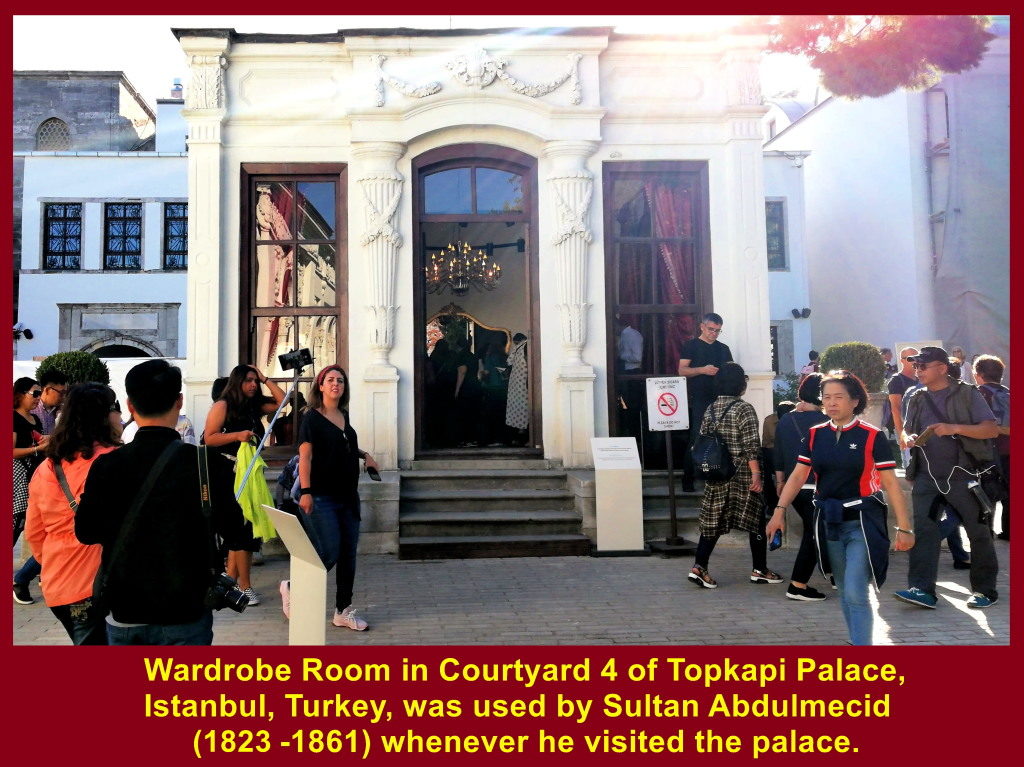
Twin Tower Gate
Twin Tower Gate is the back gate of Topkapi Palace in Istanbul, Turkey, and opens into Bosphorus Strait.
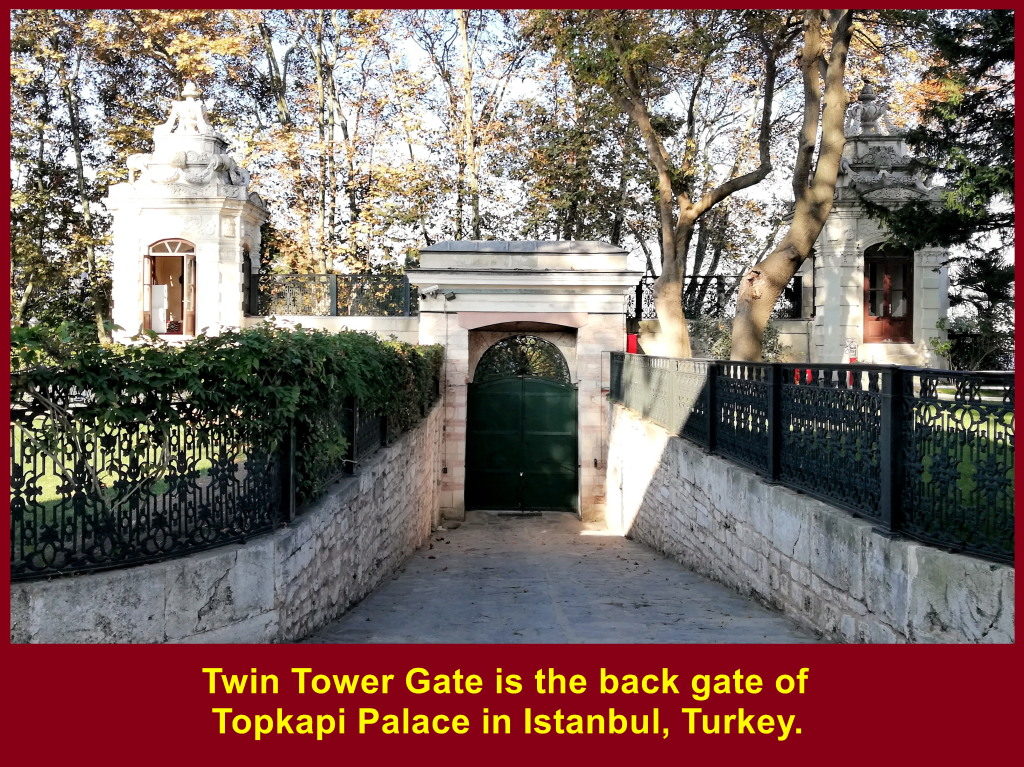
Breathtaking View
A breathtaking view of Bosphorus Bridge and the Strait of Bosphorus as seen from Topkapi Palace, Istanbul, Turkey
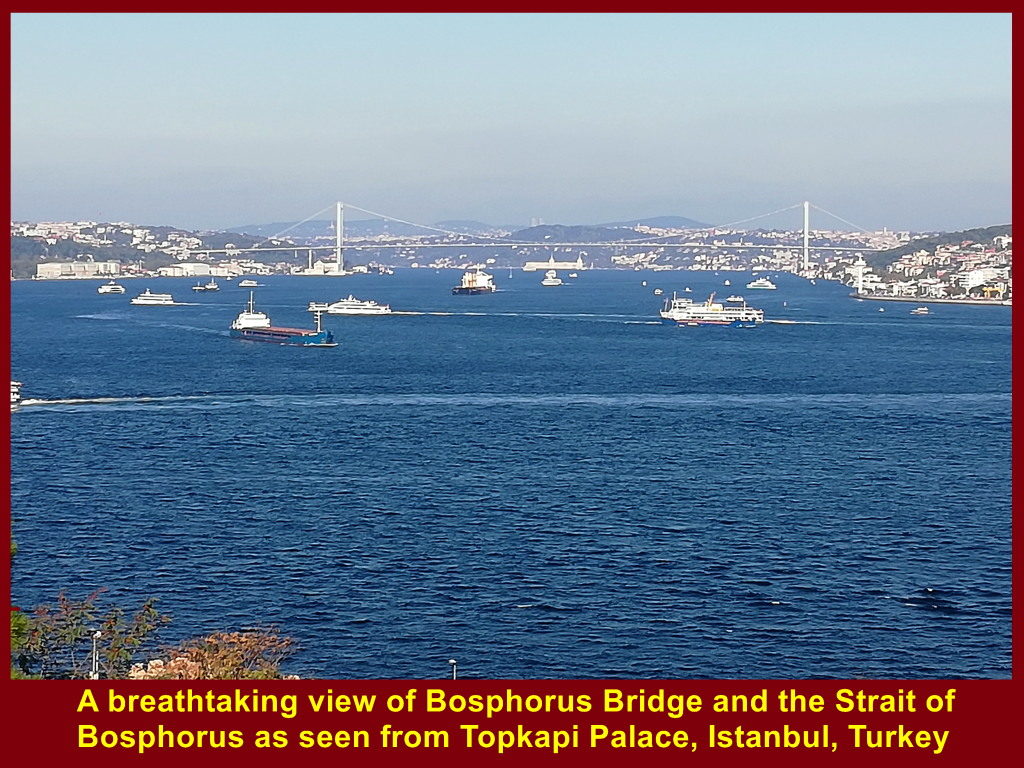
Visiting Blue Mosque
The last place we visited for the day was a large mosque known as Blue Mosque or Sultan Ahmed Mosque which was opened in 1616 as shown in the photo below. This photo was taken at the mosque.
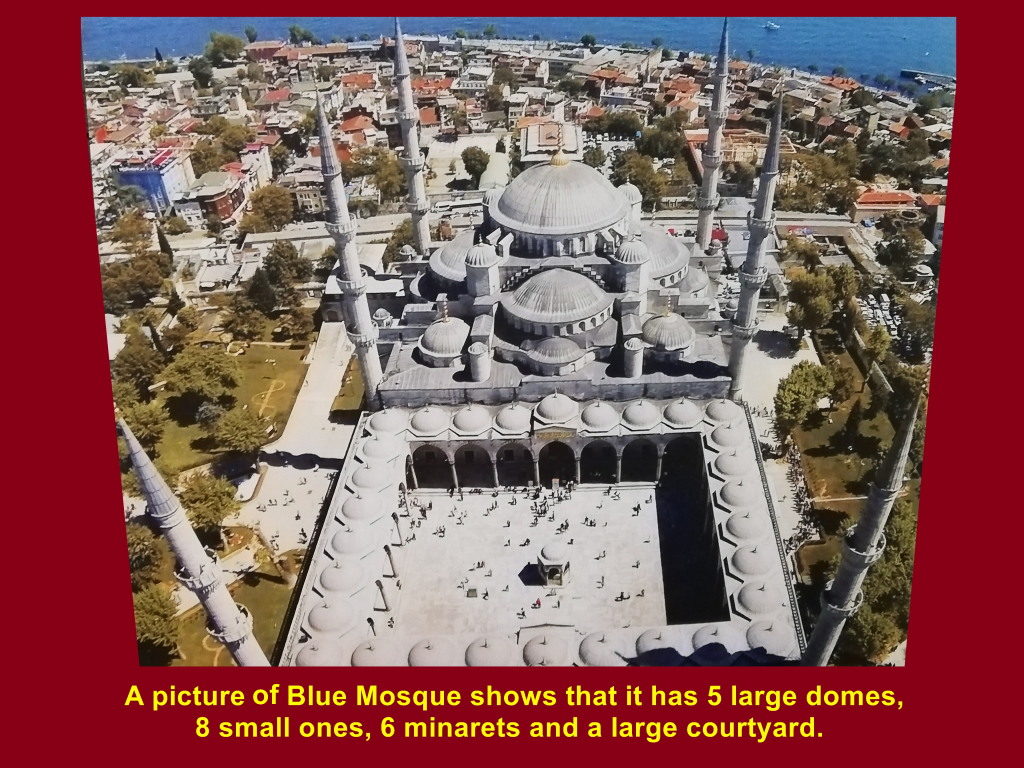
Blue Mosque is near Hagia Sophia Museum
We walked a few hundred metres from Topkapi Palace to Blue Mosque or Sultan Ahmed Mosque. The mosque is near Hagia Sophia or Ayasofya Museum.
Front of Blue Mosque
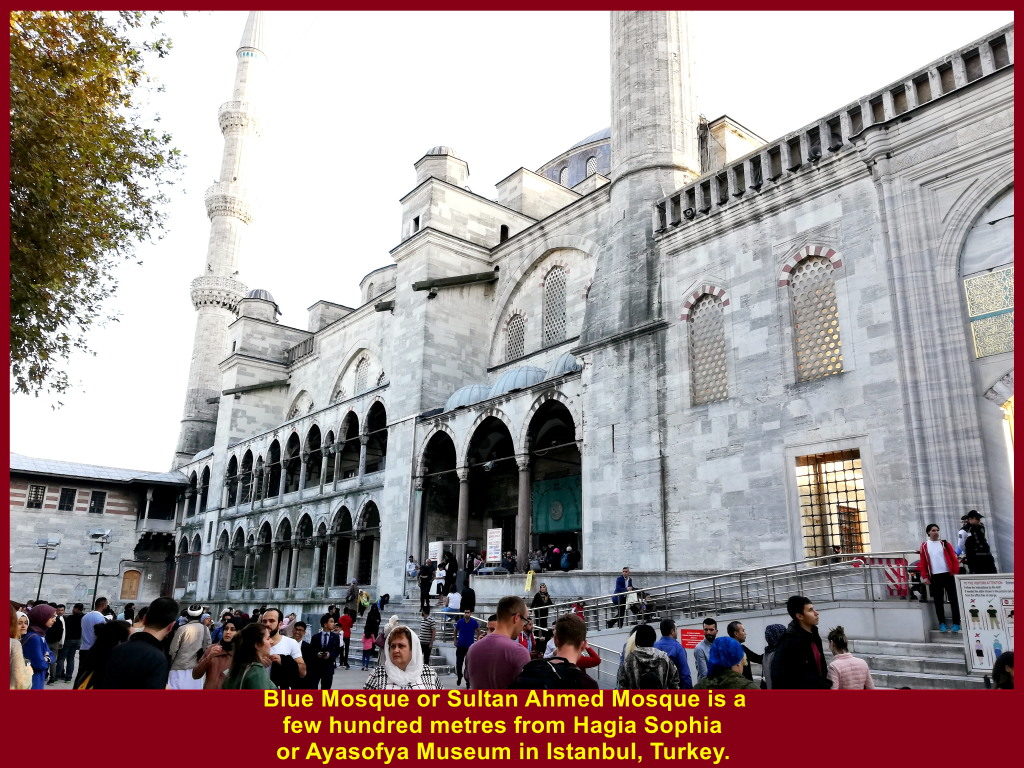
Prayer Hall
The large prayer hall in Blue Mosque has many columns supporting five main domes and 8 smaller ones. The hall has a capacity of 10 000 worshipers.
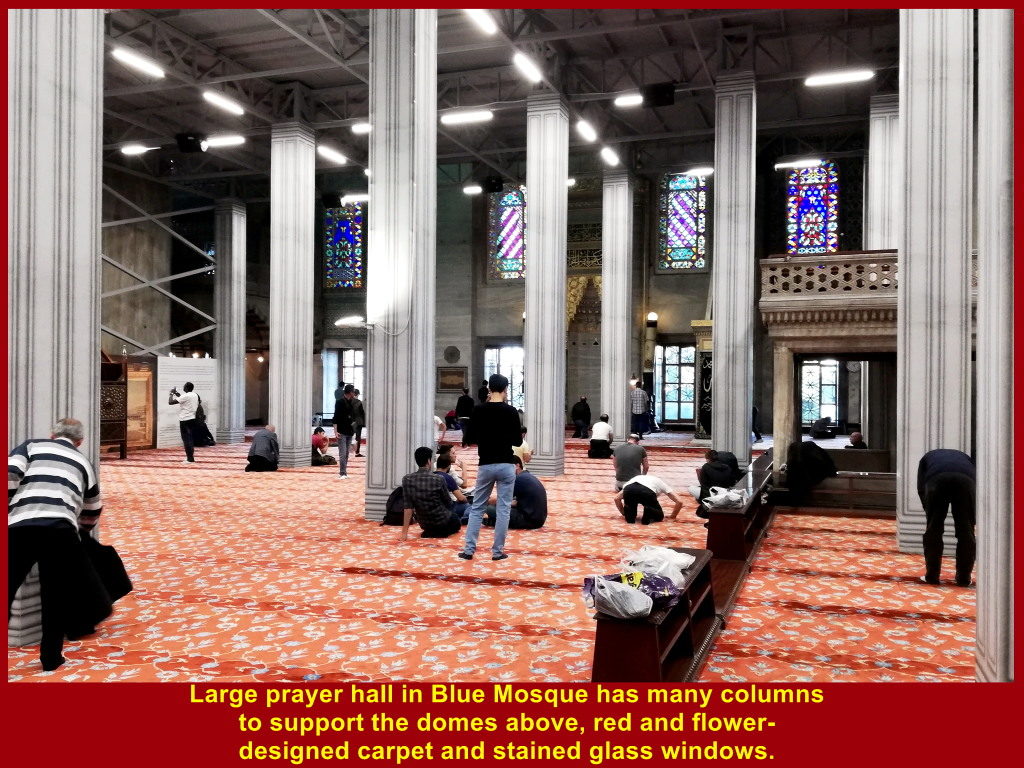
Exit and Entrance Door
The exit and entrance door of Blue Mosque or Sultan Ahmed Mosque in Istanbul, Turkey
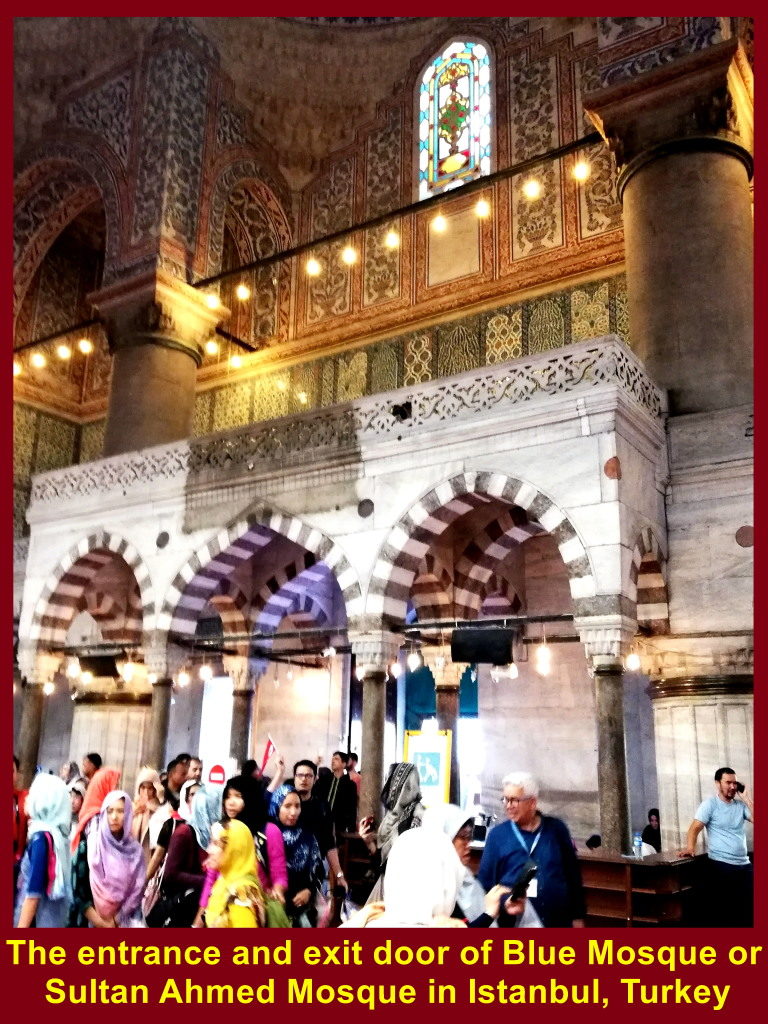
Courtyard
The courtyard of Blue Mosque or Sultan Ahmed Mosque
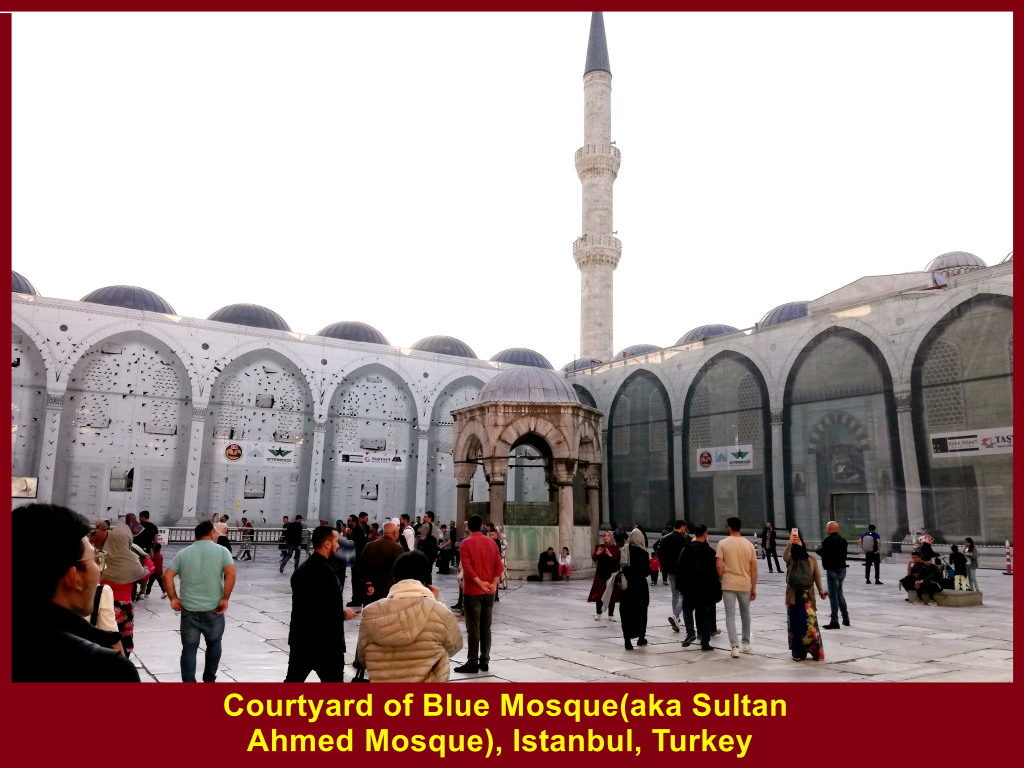
Visitors relaxing in the courtyard of Blue Mosque or Sultan Ahmed Mosque
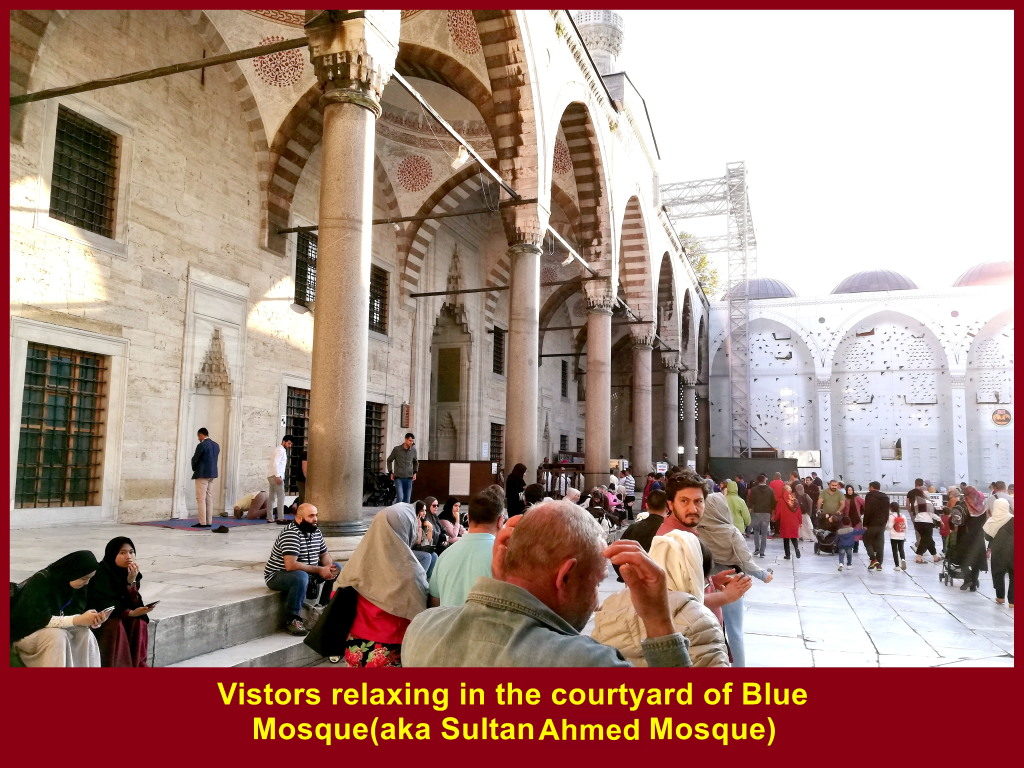
Sultan Ahmet Square
At 5.10 p.m. we left Blue Mosque and walked in an open-air area adjacent to the Blue Mosque. It was known as Hippodrome of Constantinople which was developed by Byzantine emperor, Constantine VII(905-959 AD). It was used for chariot racing and other entertainments. Besides, a few monuments were erected there to adorn the place which is now known as Sultan Ahmet Square.
Below are some of the monuments left in the square.
(a) Obelisk of Pharaoh Tutmose III(1481-1425 BC)
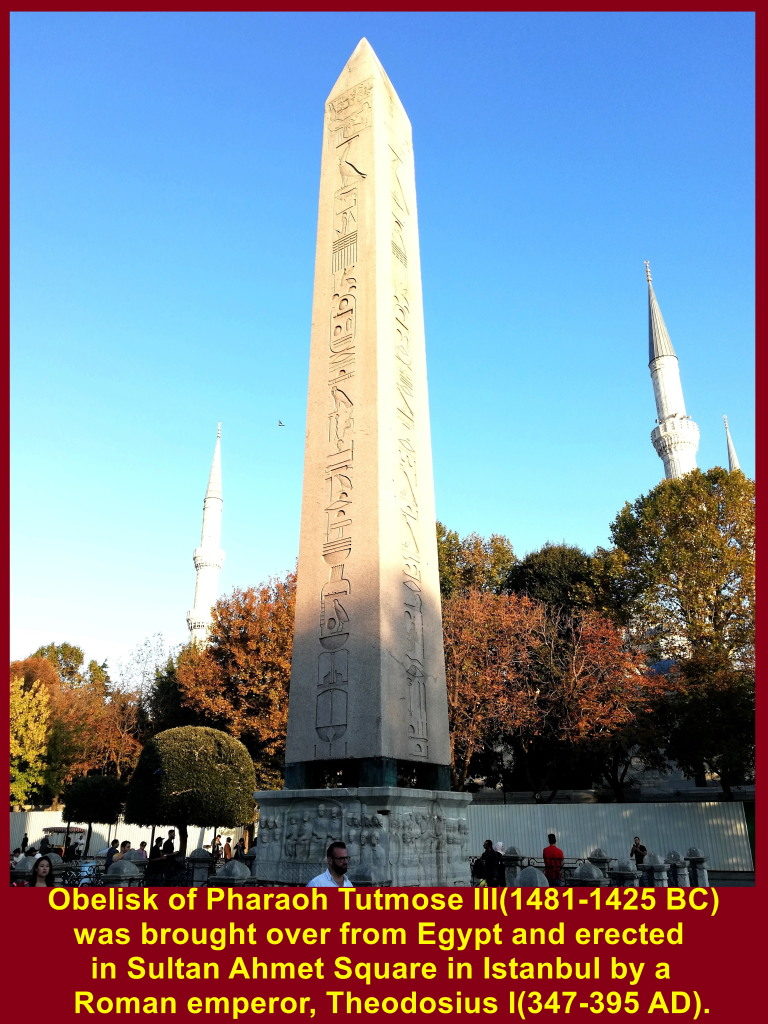
This obelisk was brought over from Egypt and erected in the square by a Roman emperor, Theodosius I(347-395 AD).
(b) Walled Obelisk
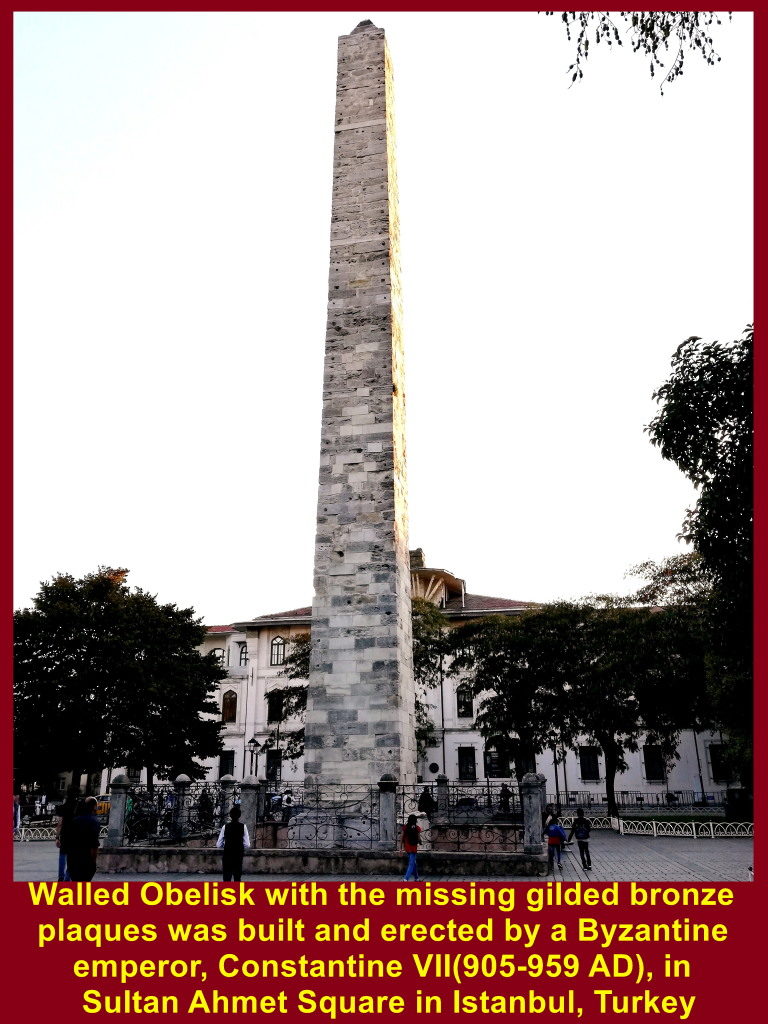
This obelisk with the missing gilded bronze plaques was built and erected by a Byzantine emperor, Constantine VII(905-050 AD).
(c) Serpent Column
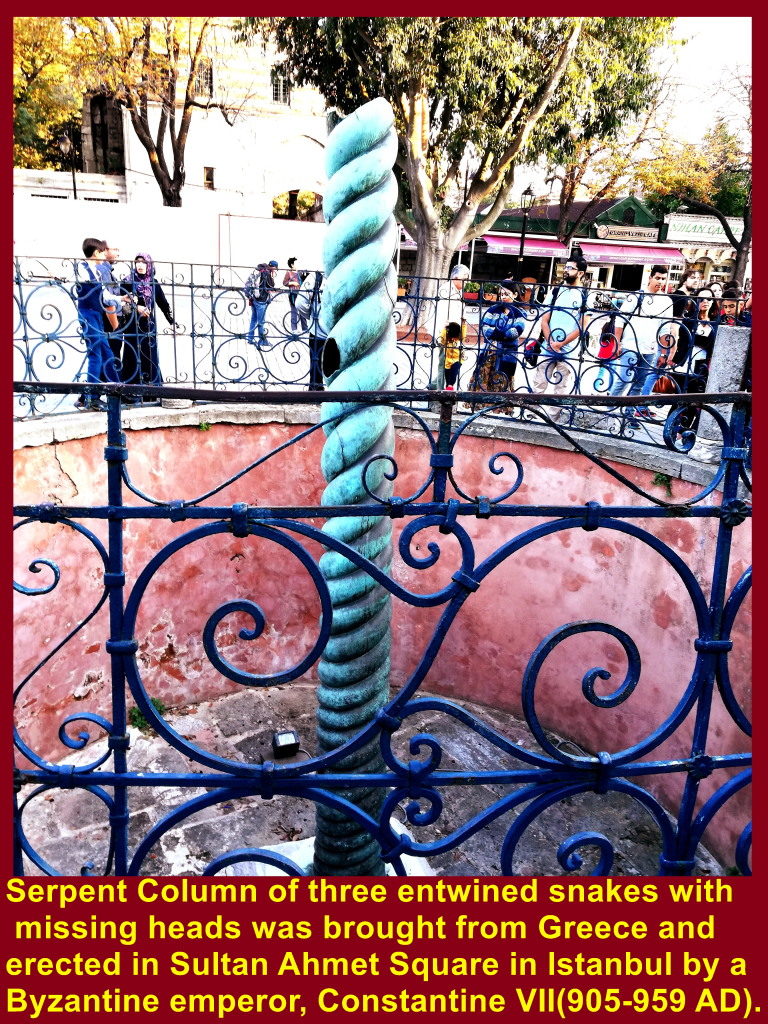
This column with three entwined snakes with missing heads was brought over from Greece and erected in the square by a Byzantine emperor, Constantine VII(905-959 AD).
Later, we checked in and had dinner at a hotel, Golden Tulip Hotel, in Istanbul City.
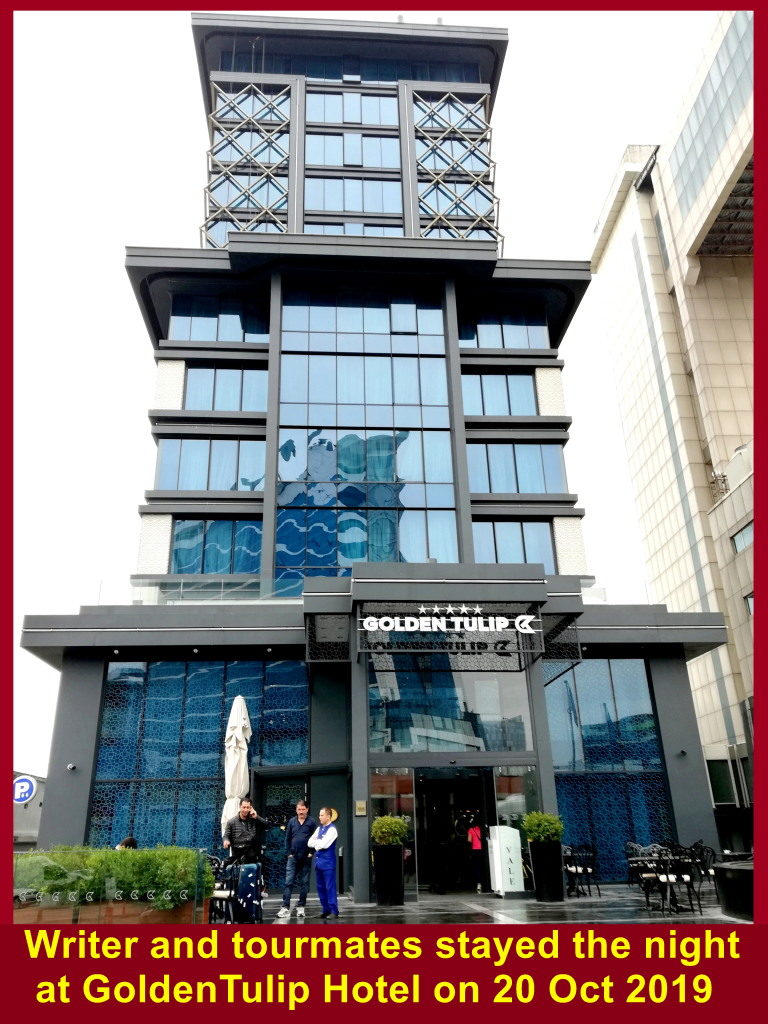
Previous Page / Home / Next Page
Places visited during Turkey Tour(13-22 Oct 2019):
Trojan Horse/Ancient Troy Cities Asklepion Ephesus Hierapolis/Pamukkale Travertine Sultanhani Caravanserai Pasabag Valley Uchisar Valley/Kaymakli Underground City Gerome Valley/Turkish Night Show Hot Air Balloon/Lake Golu/Anitkabir Hagia Sophia/Topkapi Palace/Blue Mosque Bosphorus Boat Cruise Spice Bazaar/Grand Bazaar
